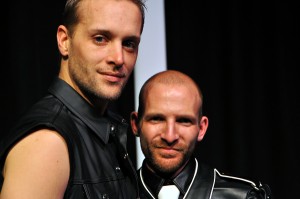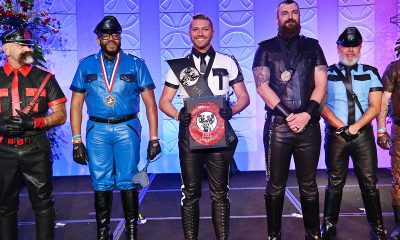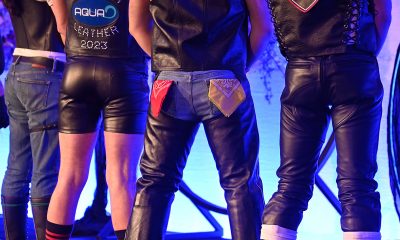Arts & Entertainment
Fetishes and festivities
This weekend’s Mid-Atlantic Leather convention has new location
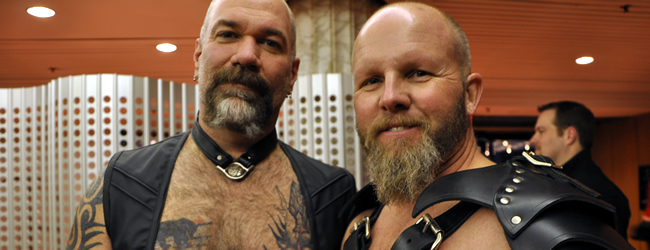
Mid-Atlantic Leather Weekend 2011
Hyatt Regency Hotel Capitol Hill
400 New Jersey Ave. NW
Friday
* Registration — Ballroom level foyer — 4-10:30 p.m.
* Leather Exhibit Hall — exhibit area, Ballroom Level 5-11 p.m.
* Opening Reception (cash bar) — Yorktown Ballroom — 9-11 p.m.
* MAL Bar Crawl Bus — 10 p.m.-2 a.m.
Saturday Jan. 15
* Registration continues — 10 a.m.-5 p.m.
* Leather Exhibit Hall continues — noon-8 p.m.
* Leather Cocktails — Regency Ballroom — 6:30-9 p.m.
* CODE Party — The Crucible — 9 p.m.-2 a.m.
* MAL partner event — discounted admission
for MAL 2001 Full Weekend package holders
* MAL Bar Crawl Bus -—10 p.m.-2 a.m.
Sunday
* MAL Brunch — main lobby — 10 a.m.-noon
* Leather exhibit hall continues
* Mr. Mid-Atlantic Leather Contest — Regency Ballroom — 1 p.m.-5 p.m. (separate tickets are available for this event)
* Reaction — 9:30 Club — 10 p.m.-5 a.m. (separate tickets are available for this event)
The Bootblack Brigade hosts a bar night Saturday starting 10 p.m. at Green Lantern, 13335 Green Court, N.W. — no admission fee
And at D.C. Eagle, 639 New York Ave. N.W., the MAL Weekend welcome begins 7 p.m. Friday and continues through Monday starting at 8 p.m.
More details are here.
It’s back for another year — Mid-Atlantic Leather Weekend.
Once again, Washington becomes this weekend a fantasy scene of leather chaps and cigars, slave collars and chains — with hankie-flagging people seeking the endorphin rush of erotic heat as they cruise hotel lobbies and prowl upstairs corridors for private play parties or hunt exotic thrills at live demos of kink at the Code party. But it’s also the chance to meet old friends and make new ones within the special brotherhood (and sisterhood) of the men and women who embrace leather.
And this year’s gathering happening this weekend, this time at a new hotel, promises once again, according to the sponsoring organization, the Centaur Motorcycle Club of D.C., on its website, to be “one of the hottest leather/fetish events in North America and the world’s largest leather club run.”
“Thousands of leathermen, gearheads, kinksters, rubber freaks and even curious novices from all over the world,” says the promo material, will “come to the nation’s capitol for a weekend of hot, horny fun.”
“We’re literally looking for thousands of people to come for the weekend,” says a confident Larry Barat, the Centaur M.C. promotions chair for the weekend. About 600 or 700 people are expected to register for the full, three-day package, he says, “but we anticipate 2,000 or 3,000 or possibly more to participate in side events organized around the weekend and at the bars,” especially, he said, at the D.C. Eagle and Green Lantern.
The three-day package is $180 in advance or $200 at the door, a package including access to all events and exhibits, said Barat, who also pointed out that “an important new change for MAL 2011” is that entry into the weekend area at the hotel, including for the Leather Exhibit Hall but not the special events, will now require a “Weekend Admission Pass.” The cost for such a three-day pass is $25 if purchased on Friday, $20 on Saturday, or $10 on Sunday or alternatively $10 for any one of those days only.
The D.C.-based Centaur club, now in its 41st year, according to Barat currently consists of about 30 active members. It has sponsored MAL, now in its 31st year, from the beginning. After more than a decade of being housed at the Washington Plaza Hotel at Thomas Circle, it moves this year to the Hyatt Regency on Capitol Hill, because “we simply outgrew that hotel,” Barat says. The Washington Plaza has only 360 rooms, while the Hyatt has about 800.
“Obviously with a new home for MAL, we’re excited about that, but also a little nervous,” he adds, but he has been meeting with Hyatt staff, along with other Centaur event planners, and believes everybody feels that the weekend will be a success.
Another MAL Weekend coordinator, its chairman and fellow Centaur member Patrick Grady met Monday for another meeting “with about 30 hotel managers in the room,” and Grady says “everybody at the Hyatt is very enthusiastic indeed.”
This year, they have booked only about three-quarters of the Hyatt’s rooms because, says Barat, “we were trying to be a bit conservative this year and not over-extend ourselves.” Even so, weekend registration has spilled over into rooms reserved at the Liaison Hotel across the street.
All MAL attendees will be on the same floors. Organizers hope next year to fill the entire hotel.
Grady says his first MAL Weekend began when he joined the Washington Plaza Hotel as its director of catering in 1997 and a month later hundreds of MAL Weekend participants thronged the hotel, the second year at that venue, and he got his first real look close-up at the leather community.
“I was a newbie in ’97,” he says, “and I didn’t know their community even existed.”
He was taken in by the friendly vibes and soon, he says, he began to frequent the Eagle and then to hang out with the Centaurs. By 1999 he had sunk his own roots deep into the leather world.
Grady says that after that first weekend, “I couldn’t wait to see everybody back in ’98,” and he was drawn to the sense of community that he found, especially in the Centaur MC. Yes, he knows that some LGBT people are uncomfortable with the more taboo aspects of the leather world — the BDSM sexuality — but he says the reality is that the leather world — and the Centaur club — is “very diverse.”
“We have members who have motorcycles and those who don’t, who are large and skinny, tall and short, and the only real common denominator is that we like one another,” he says. “Some are hard-core leather folk and others are just out for a good time.” But he admits that “when we gather together sometimes we are a little much for some people — we tend to be very gregarious.”
His objective this year is simple: “to make new friends and renew old acquaintances,” a goal echoed by Barat, who says “our aim is to have fun and make sure everybody who comes has fun, so they can meet new people and explore new things.”
The signature events, says Barat, are the Leather Cocktails reception Saturday evening, the buses for the MAL bar-crawl, the CODE party at the Crucible S&M club Saturday night into the wee hours of Sunday morning, the Mr. Mid-Atlantic Leather Contest Sunday afternoon, and the finale event, the Reaction dance at the 9:30 Club from 10 p.m. Sunday until 5 a.m. Monday. Throughout the entire weekend also, another big draw is the Leather Exhibit Hall located on the hotel’s Ballroom level, with dozens of vendors of gear, books and other paraphernalia.
The MAL Weekend in 1998 was “the first big leather event” he ever attended, though he had lived a leather lifestyle “on and off” since he was 19. Now 50 and a U Street resident for the past seven years, by day Barat works on international public health issues for the U.S. Government.
For him, owning a bike is important to the leather lifestyle, and though he recently sold his own Harley Davidson “Fat Boy,” now he says he can’t wait until the weather gets warm again to get his next new bike. Though he says another D.C.-based club, the Spartans, “are more into motorcycles,” the Cenatur M.C. still sponsors runs two or three times a year, usually to Skyline Drive and into West Virginia and back.
Like Grady, Barat was won over by the welcoming vibes of community he felt at his first MAL Weekend: “I was really kind of shocked at how friendly everyone was,” and how eager people were to teach him about the things he didn’t know, and he also began to understand the wide variety of lifestyles subsumed under the leather label.
The gay male leather subculture has existed, according to most accounts, since the late 1940s, when it grew out of gay men who had typically worn uniforms during World War II and mustered out and were looking for a way to sustain the homosocial world and its rituals and rules of masculine identity they had experienced during wartime. Soon these men found their way into the culture of biker clubs, and for them the lure of leather signified a code of dress rooted for most — though not all — in sexual activities, often defined by the sexual practices loosely grouped under the label of BDSM.
“Leather is a term that includes dressing up and getting into sexual scenes when dressed up, acting out certain sexual fantasies like getting flogged, at one end of the spectrum, but you don’t need to dress for BD events,” Barat says.
At the other end of the spectrum, he says, people just like the feel of leather and the thrill of the road and the ride.
“And it’s everything in between,” he says,”plus, it’s not just leather alone anymore – there’s rubber, there’s sports-gear, there’s uniforms. And now there’s also a lot of young guys into dressing up as super heroes and comic book heroes.”
“It’s a whole range of of people and the nice thing about the community is that it’s very accepting,” Barat says. “You see a guy in full leather gear talking to a guy dressed up like Batman talking to a guy dressed up in full rubber.”
For many, participation is a chance to distinguish themselves from mainstream sexual activities. For some it can mean immersion in sexual kink. For others, just wearing the trappings of black leather is the main point, an erotic fashion statement expressing heightened masculinity.
The pioneering gay motorcycle clubs — the Satyrs of Los Angeles, established in 1954, and others like the Warlocks of San Francisco — reflected that same sense of disaffection with the postwar mainstream. It also provided an archetype for gay men who resisted effeminate stereotypes. For years, Larry Townsend’s “Leatherman’s Handbook” was the guide by which rank in the leather community — slave, boy, sir and master — was determined.
But by the 1980s, and perhaps even earlier, a rebellion arose against old guard role rigidity, and instead there was a new emphasis upon choices and personal self-identity, in which a person might consent to begin and end as either slave or master or switch back and forth. In this new world of greater flexibility, leather practitioners defined themselves as “new guard,” and an increasing number of pan-sexual clubs evolved as well.
“There’s a generational aspect to it,” Barat says. “The old guard has to do with fixed attitudes concerning dominance and submissiveness, and in the old guard ‘D’ and ‘s’ is not just something that one does in sexual play, but something one lives 24/7.”
He says it’s now more flexible and all a matter of self-identification, not following rules.
Barat says he is a good example of this transition.
“I began as old guard and in the past I identified as a boy and more recently as a sir, but now as I get older I’ve stopped labeling myself, and now I see myself as a new guard kind of guy.”
As for the Centaurs, he says that some are into BDSM and others are not, but it’s not a primary focus of the club.
“Some of us wear leather and are into gear and not so kinky, and there others who are kinky and don’t necessarily wear a lot of leather.
Meanwhile, pop culture itself has absorbed the look of leather and the feel of erotic alternatives. Witness the numerous popular images of Elvis from the 1960s fully clothed in black leather and then 1970s heavy-metal bands such as Kiss, Black Sabbath and Judas Priest who were cloaked in leather. The latter’s lead singer Rob Halford, himself openly gay, wore a leather costume on stage as early as 1978. Soon codpieces and even harnesses proliferated on metal-rock costumes, as such gear became appropriated by internationally successful bands like the L.A. metal band Motley Crue.
Now numerous lesbians also identify as leatherwomen and a leather pride sticker adorns the guitar of singer Joan Jett. San Francisco leather and lesbian activist Pat Califa co-founded one of the first lesbian S&M groups, Samois, and became a prolific contributor to lesbian BDSM literary erotica and sex handbooks. Leather and Lace, an “old guard” woman’s BDSM social group, was founded in Los Angeles in 1980, and in New York City there was LSM – the Lesbian Sex Mafia.
Another demographic shift in leather, says Barat, has come as younger leathermen and leatherwomen enter the worlds of leather kink, fetish and gear. It used to be mostly men over 40 graduating into the leather lifestyle, he says, “but now guys get into this lifestyle at a very young age and we’re seeing guys at our events in their early twenties.”
Barat admits, however, that leather “was once so taboo and is still not fully accepted within the larger gay community.” He hopes these attitudes are changing, but that “large parts of the gay community are still very intolerant of leather folk.” He says “there are very conservative gay people, who think we should all be monogamous, live in the suburbs, have children and go to church.”
Several entertainment guests will perform. Comedy duo Dick and Duane (Richie Cohen and Duane Tragis) are slated along with the traditional Mr. MAL 2011 contest Sunday afternoon and the Reaction party at which DJ Susan Morabito will spin.
Photos
PHOTOS: Montgomery County Pride in the Plaza
LGBTQ celebration held in downtown Silver Spring
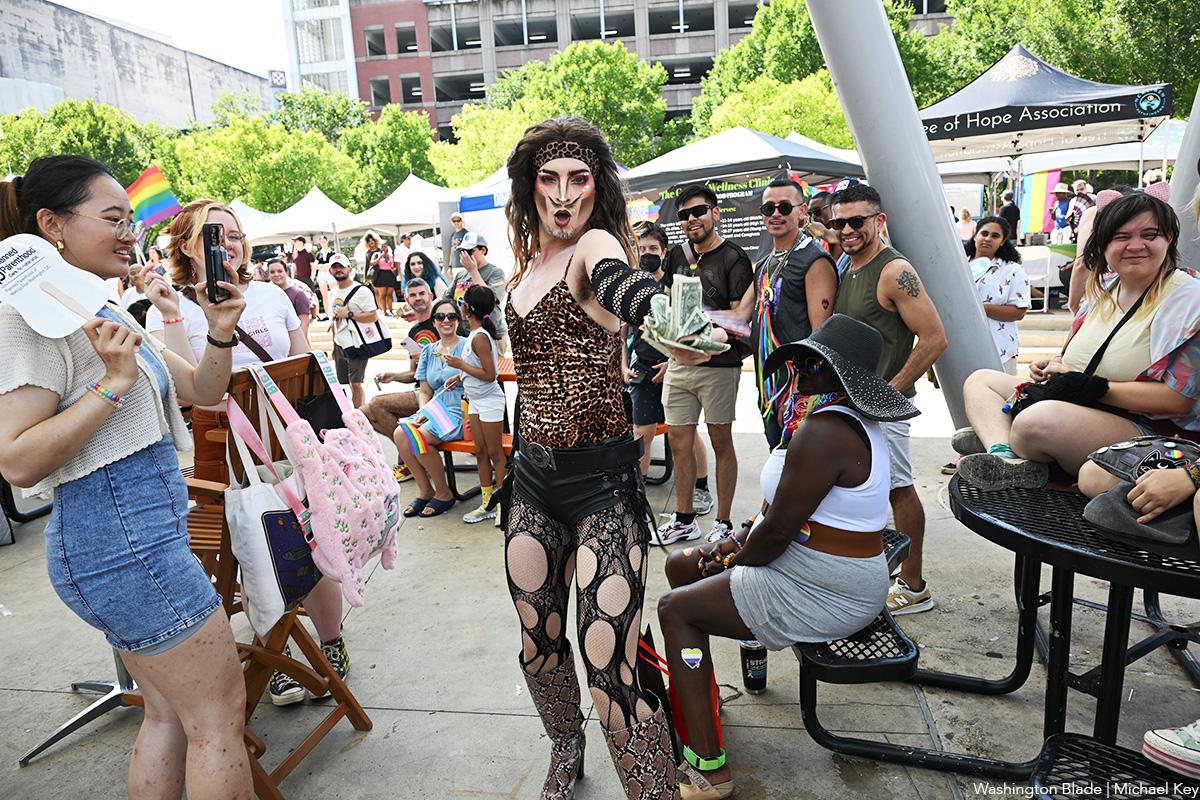
Montgomery County Pride in the Plaza was held on Sunday, June 29 at Veterans Plaza in Silver Spring, Md.
(Washington Blade photos by Michael Key)
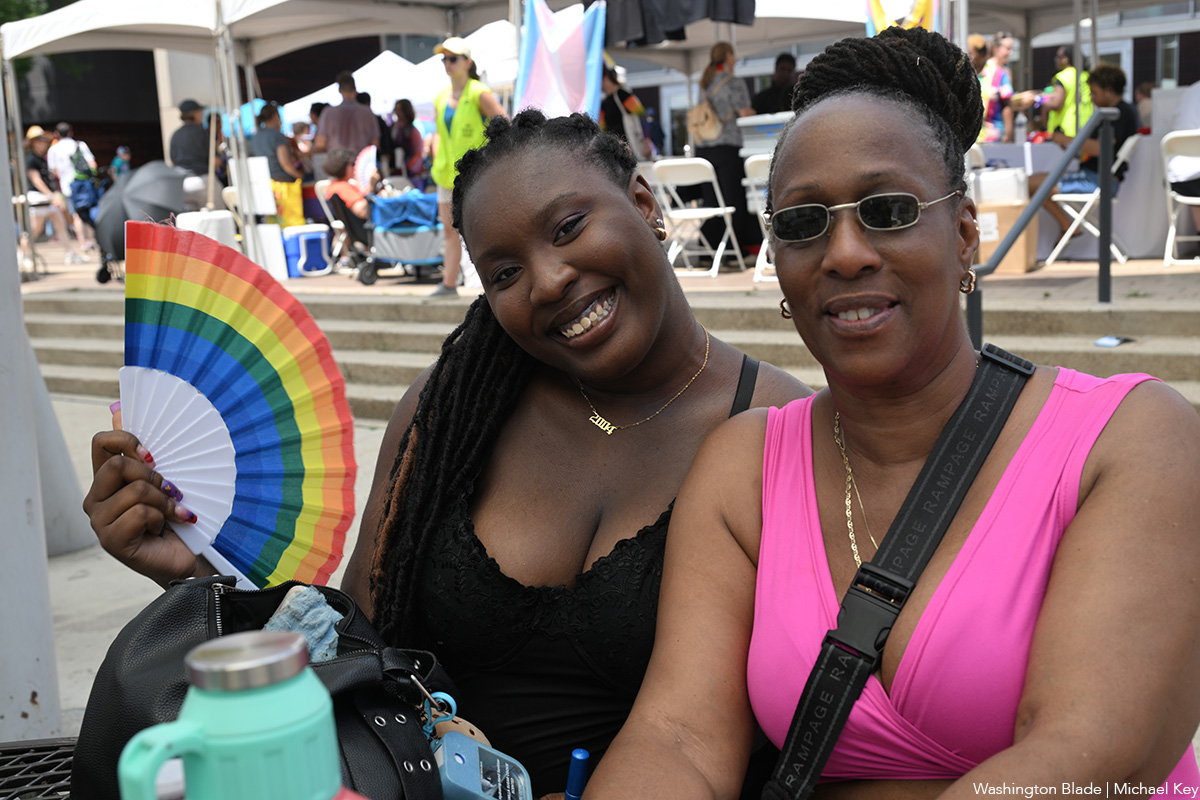
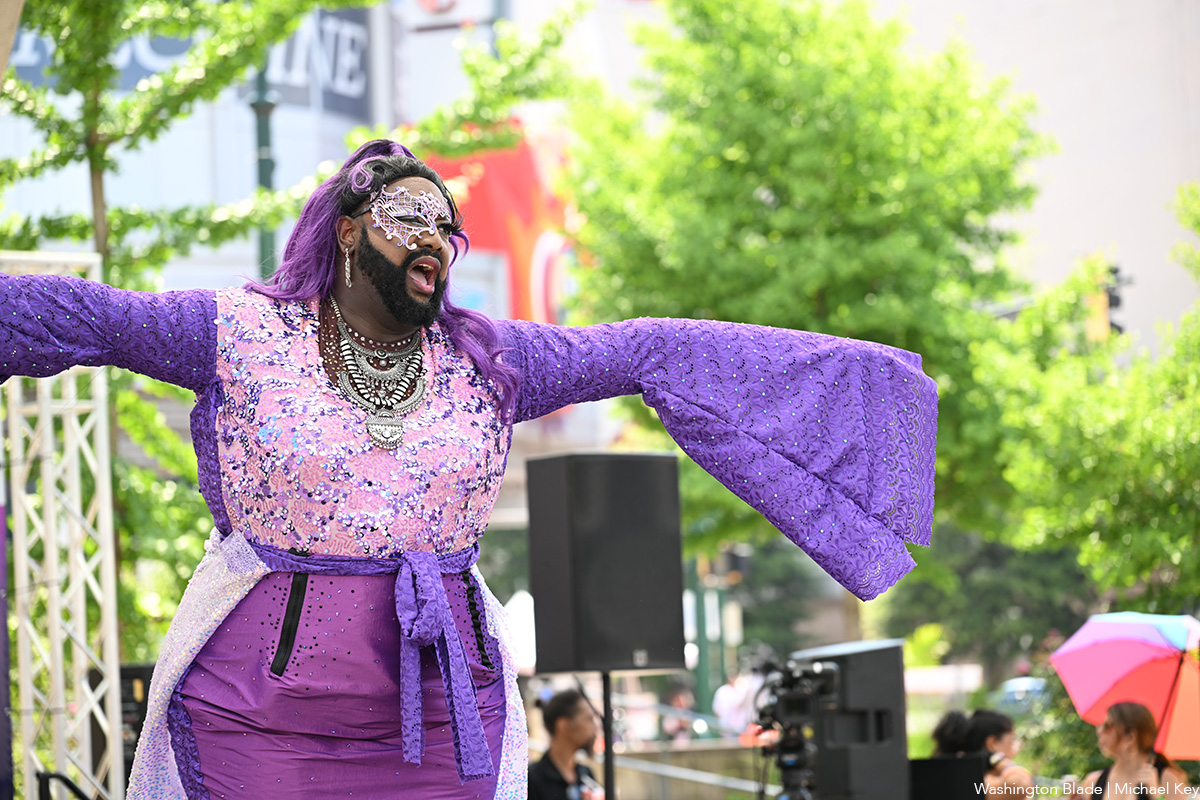
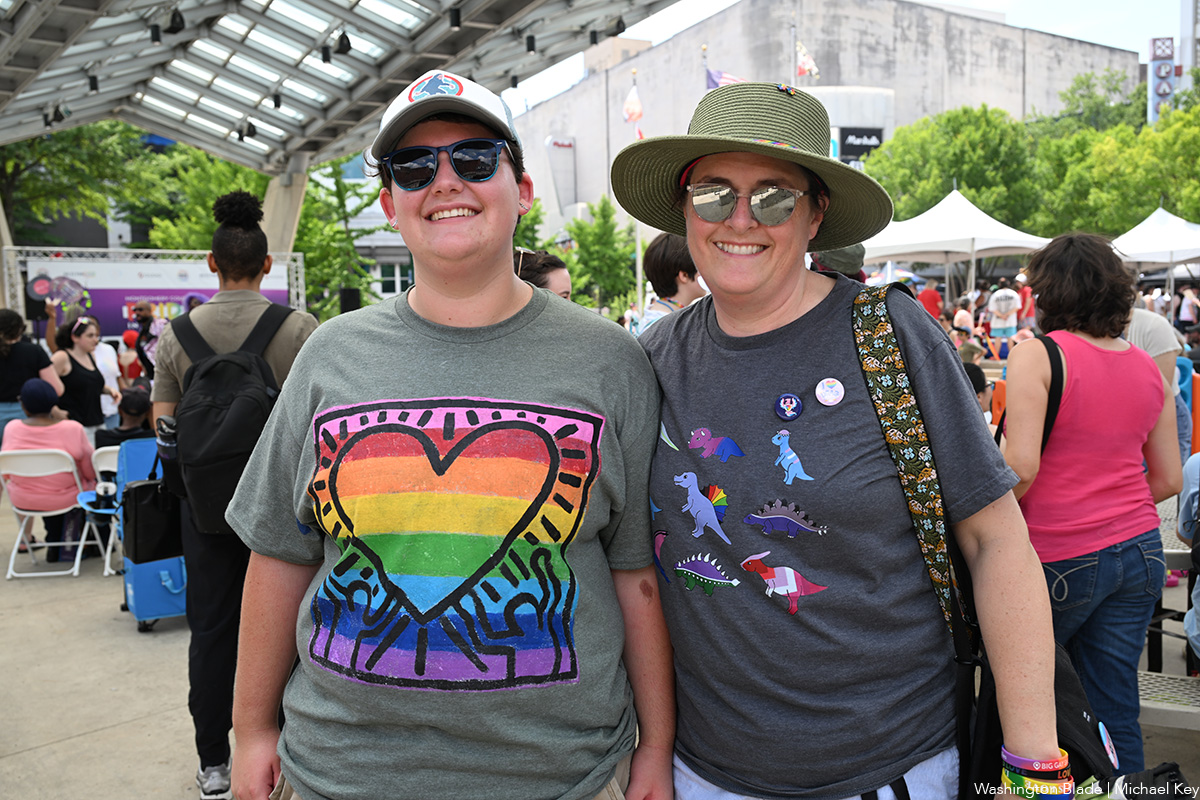
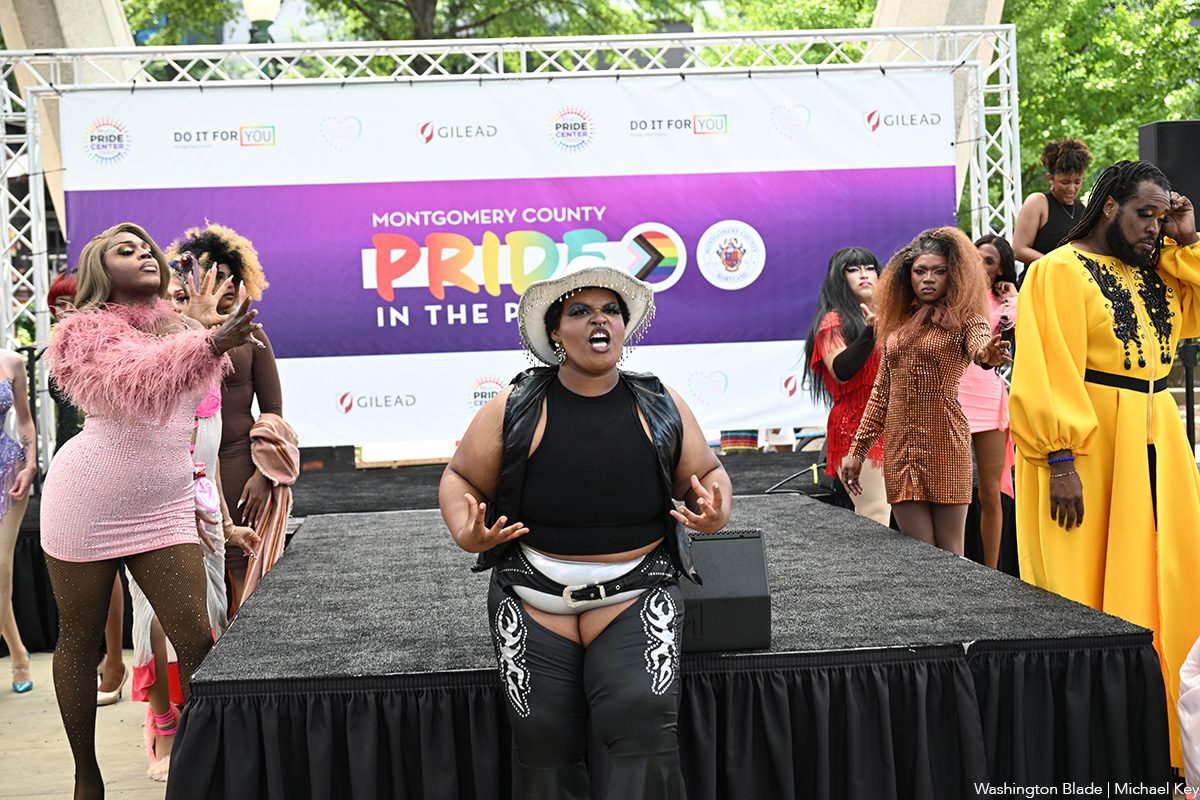
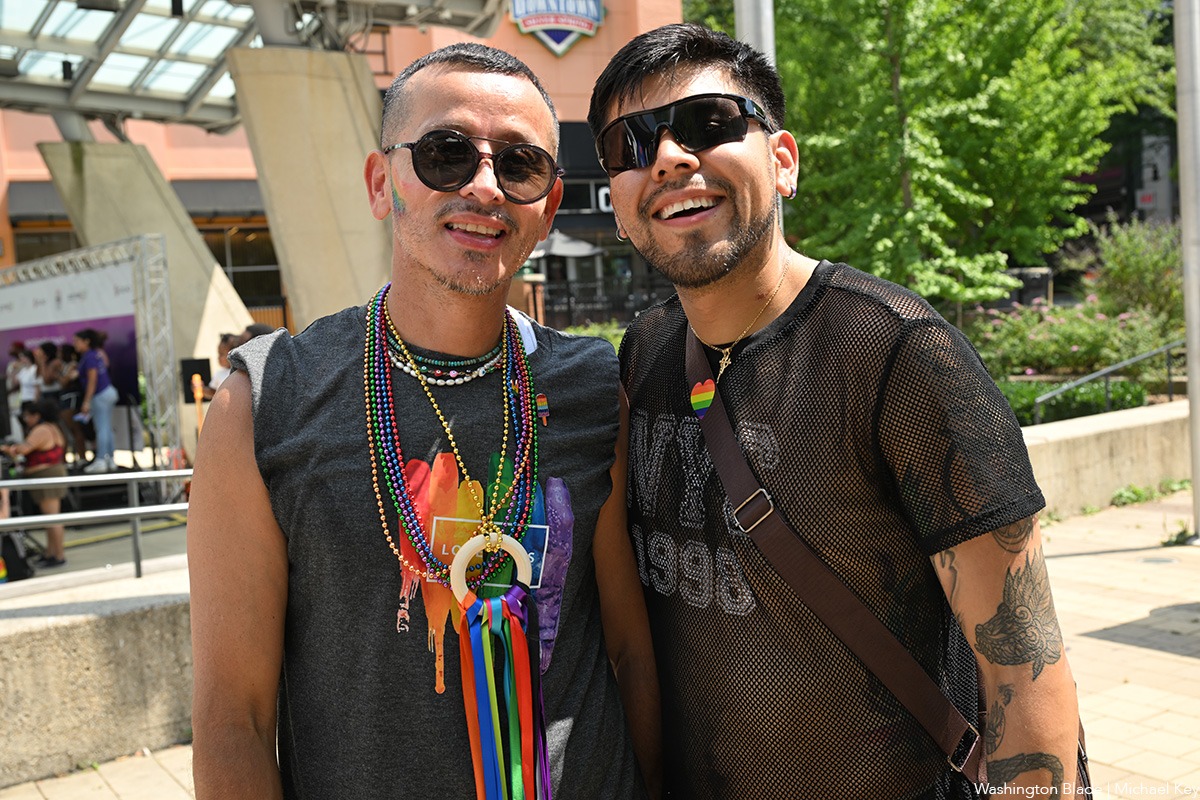

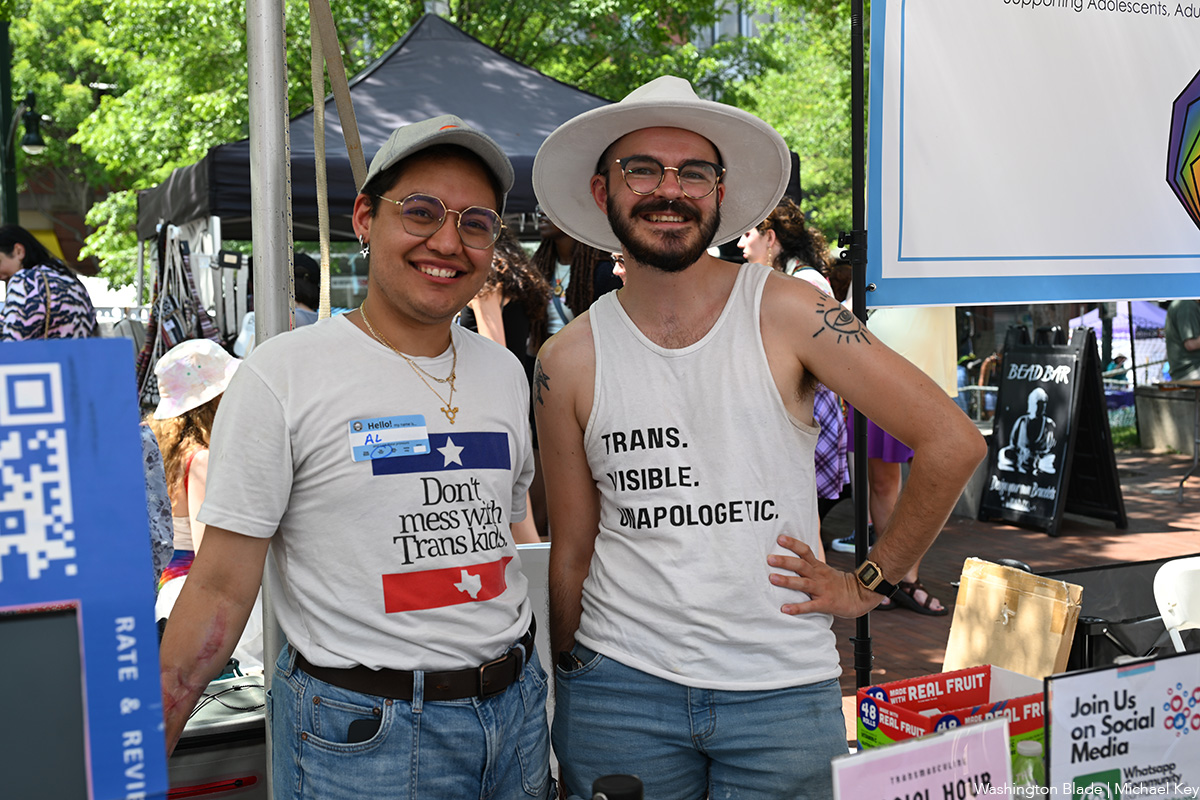
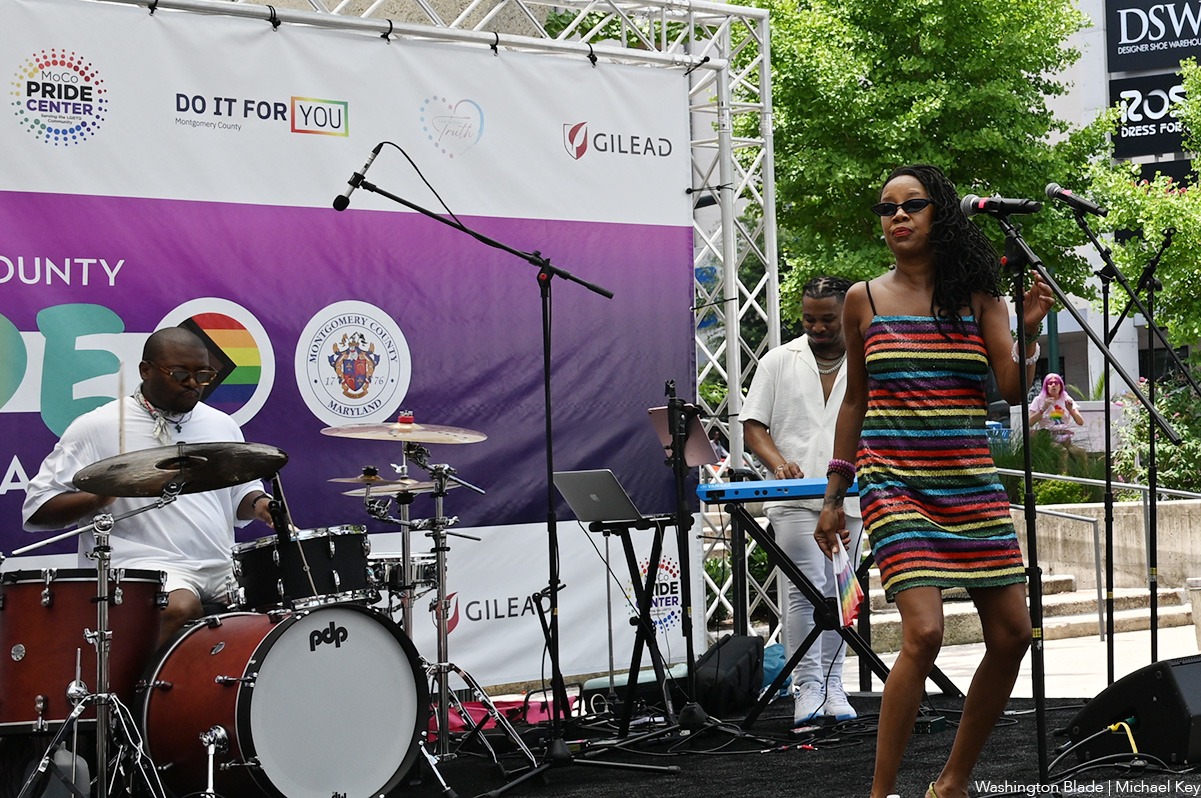
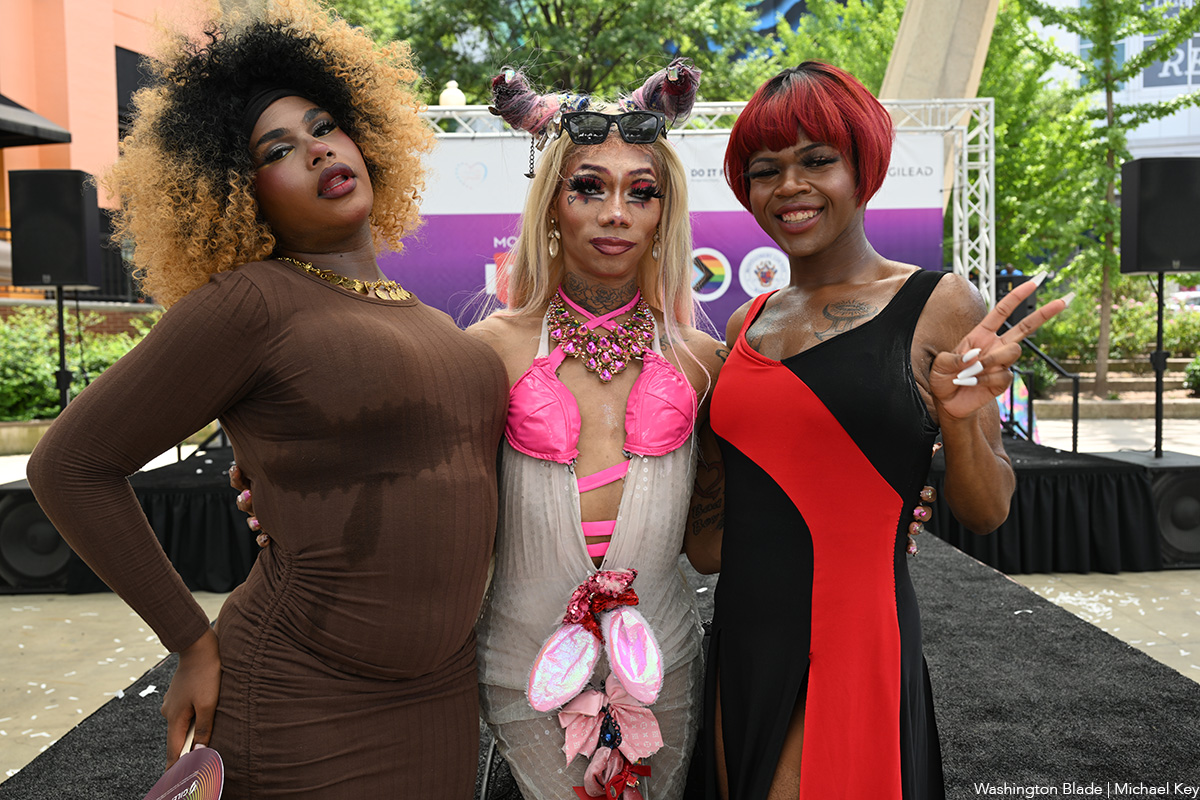
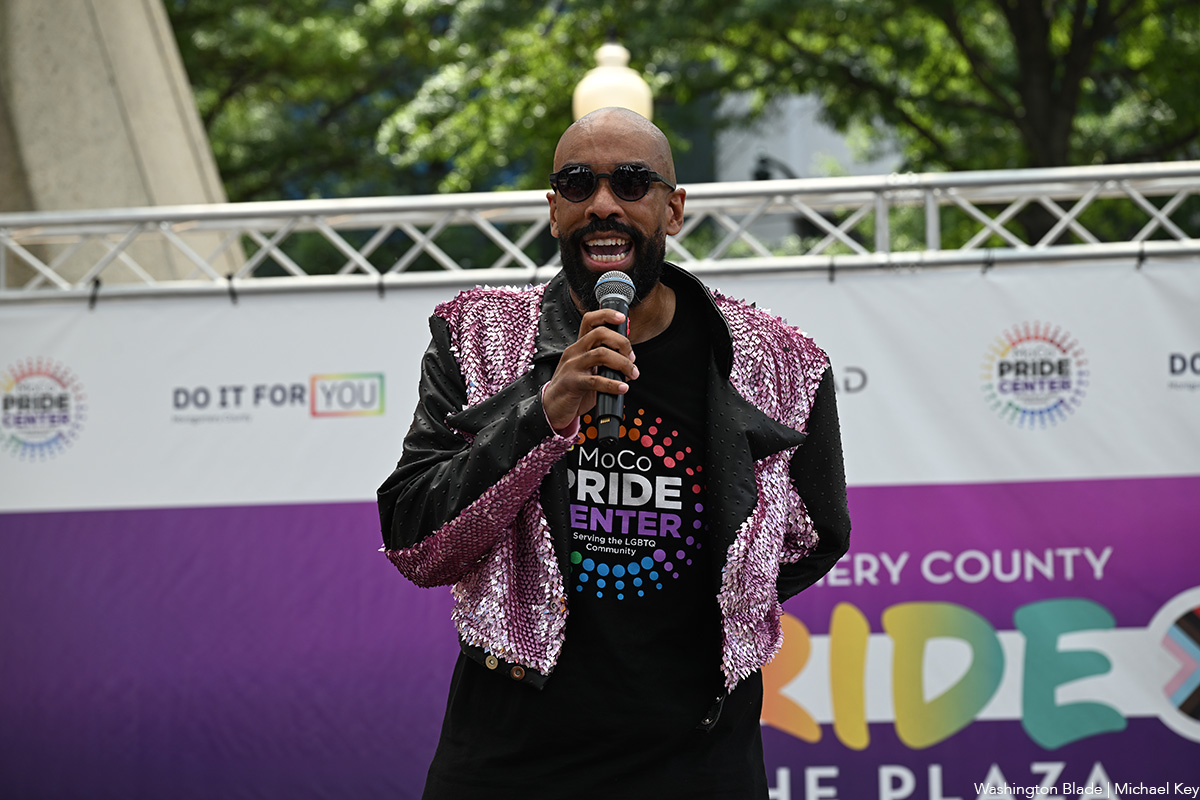
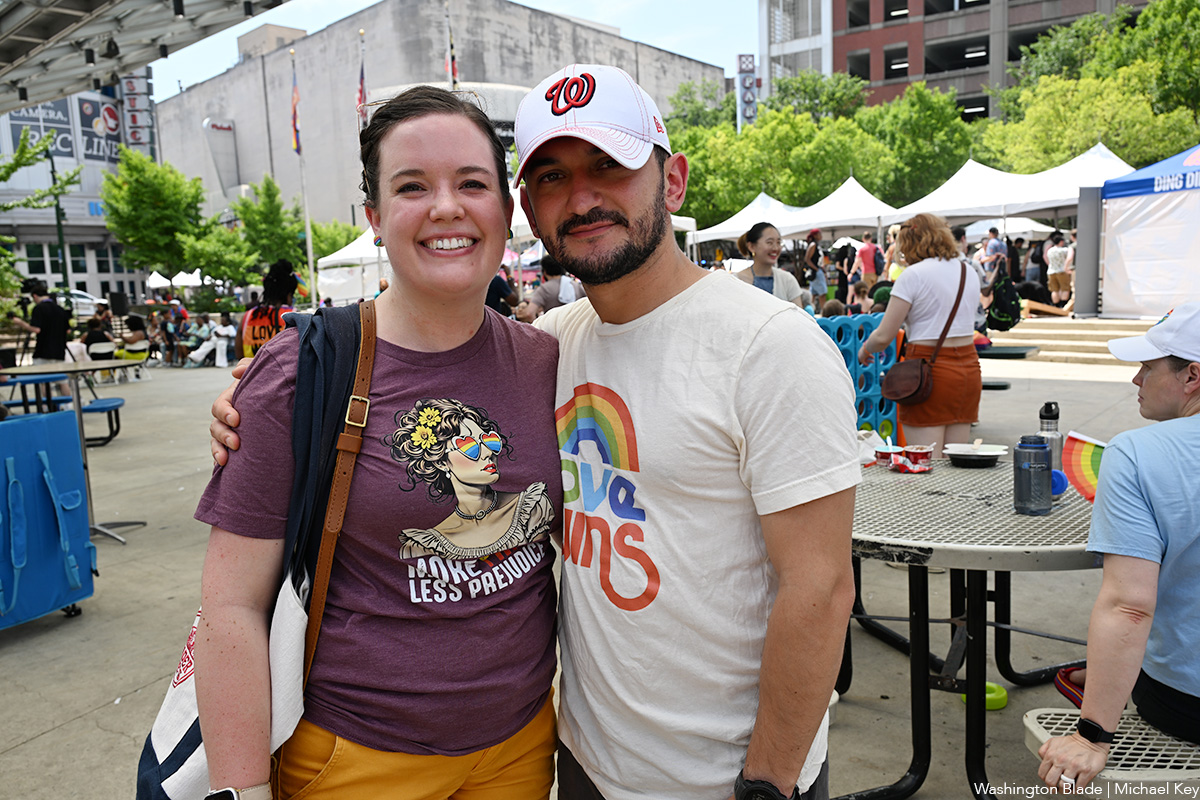
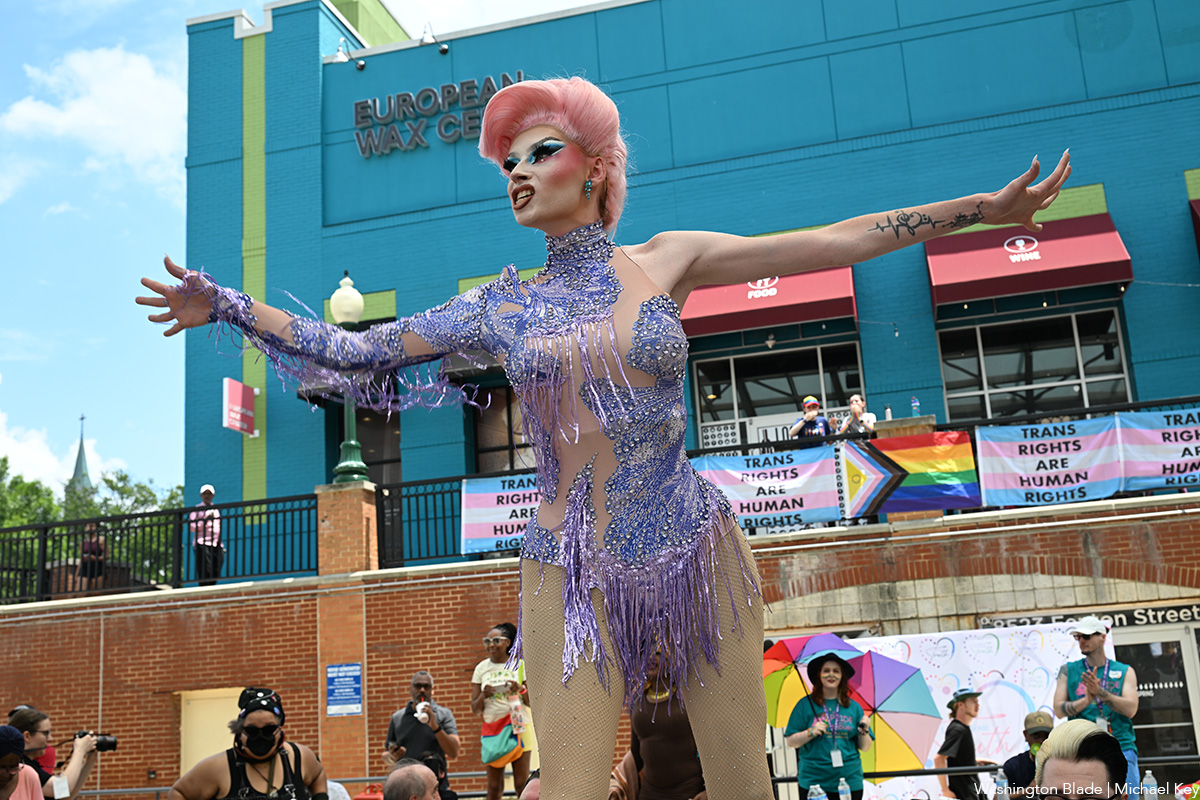
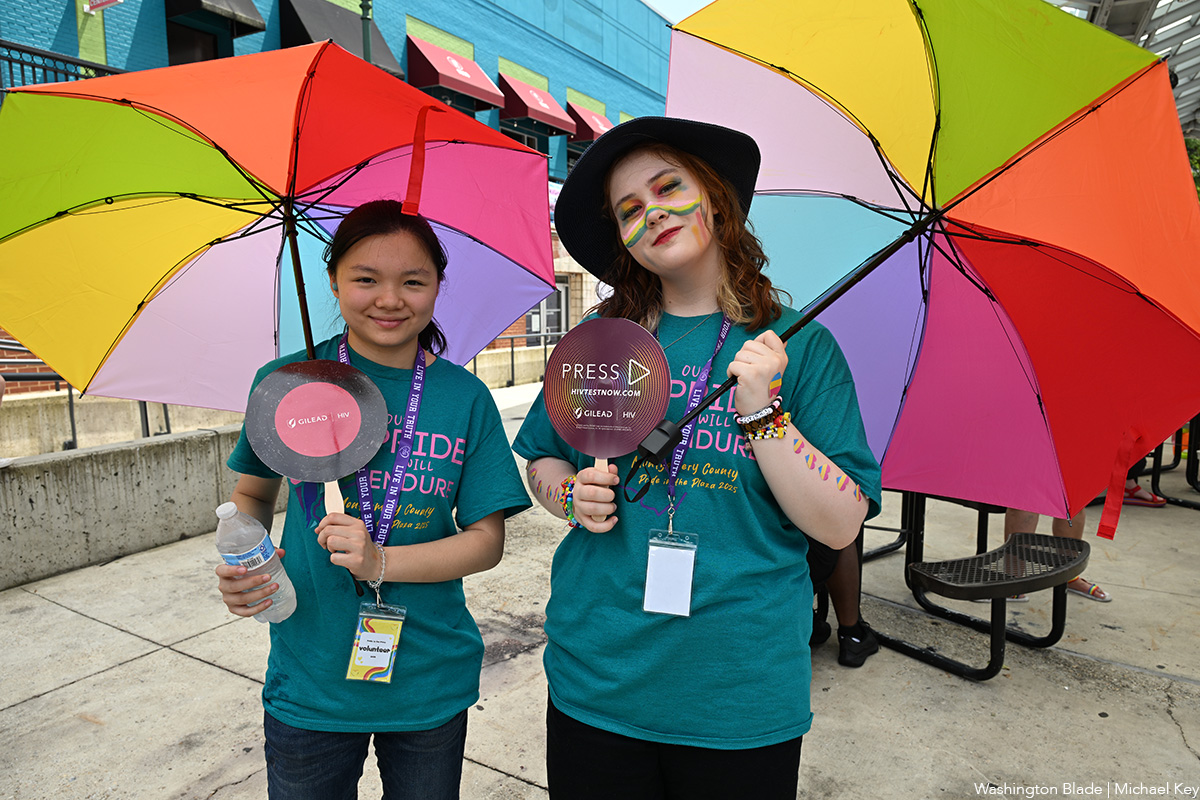
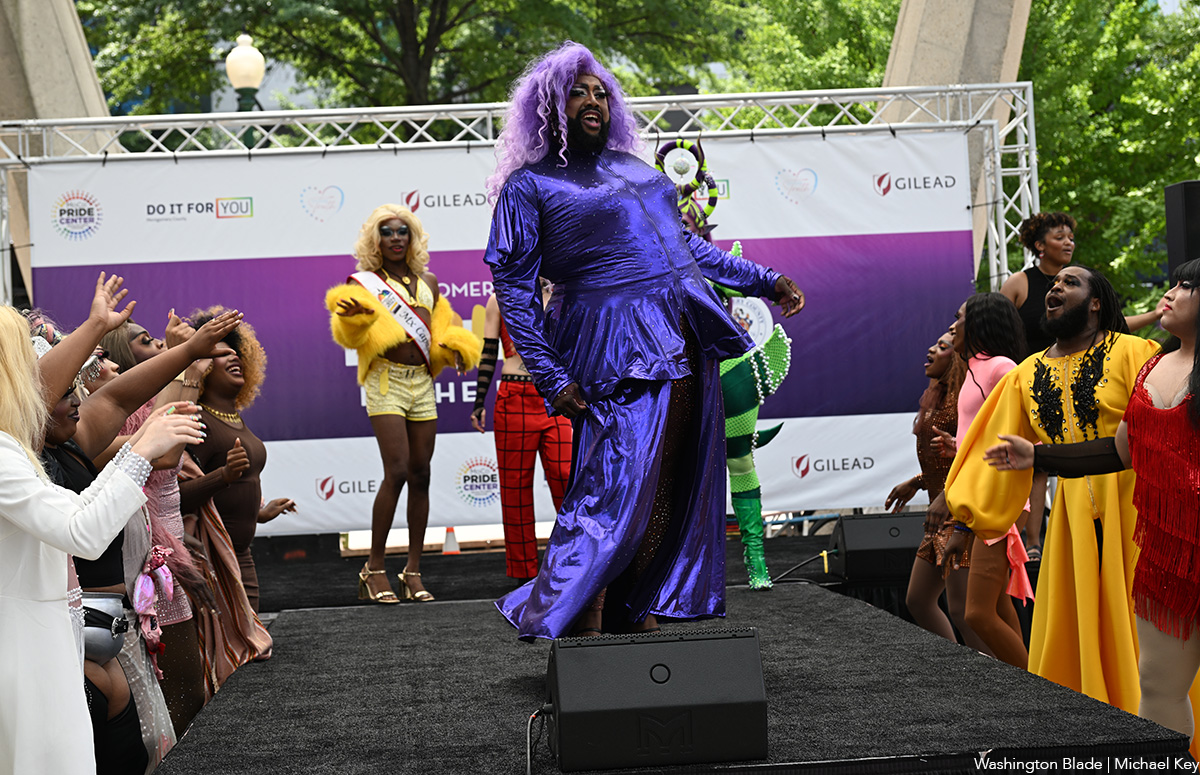
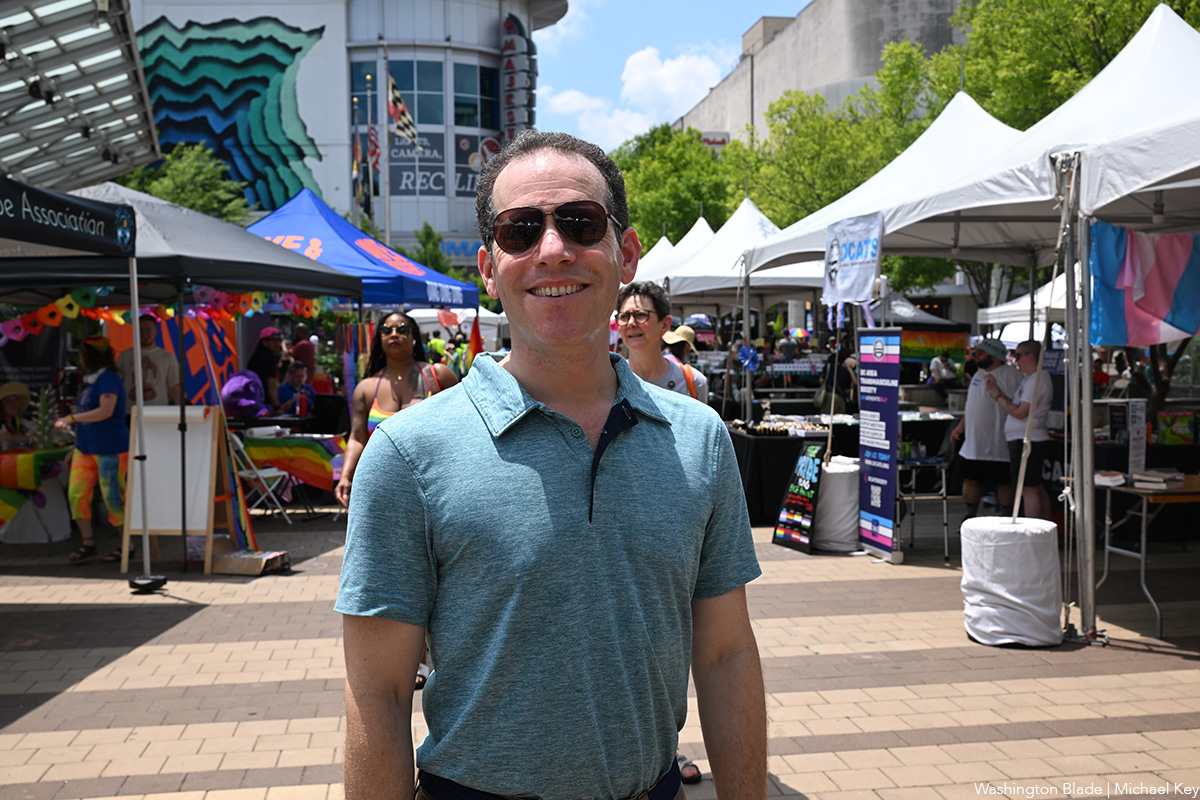
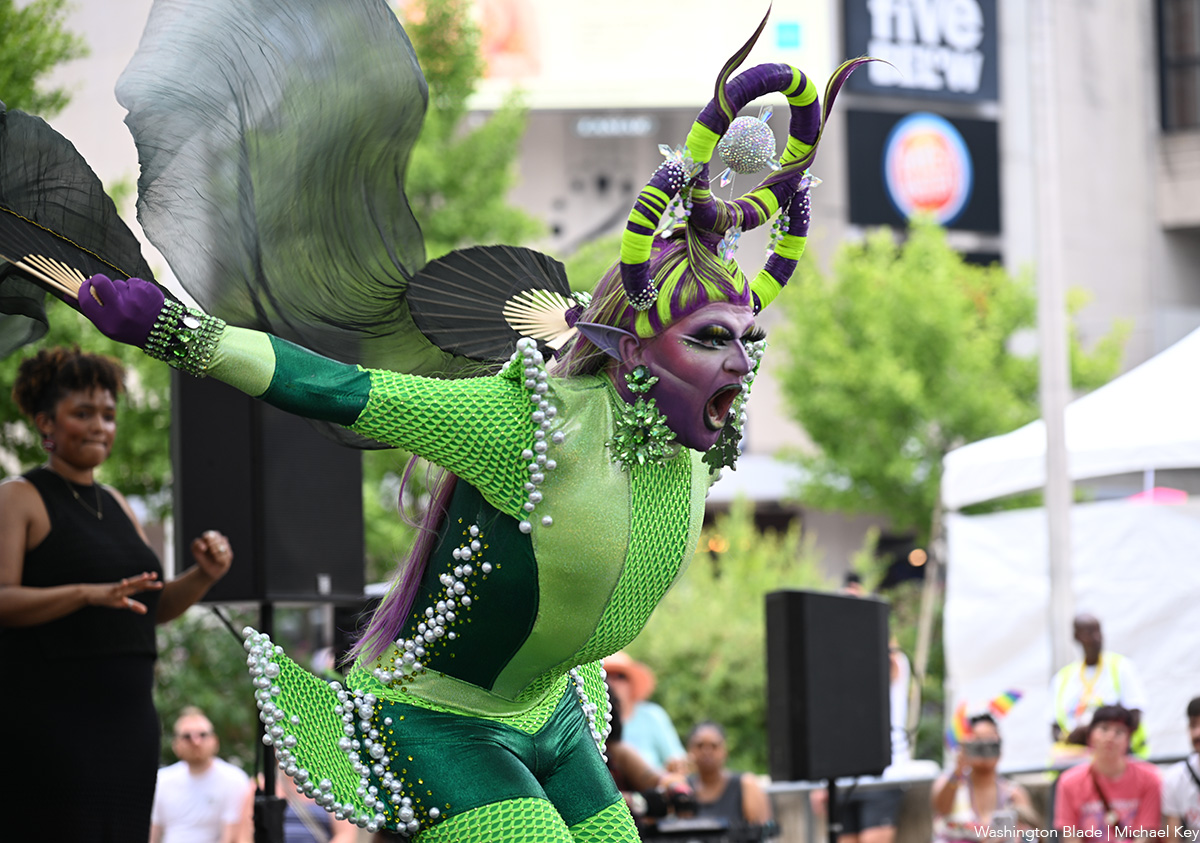
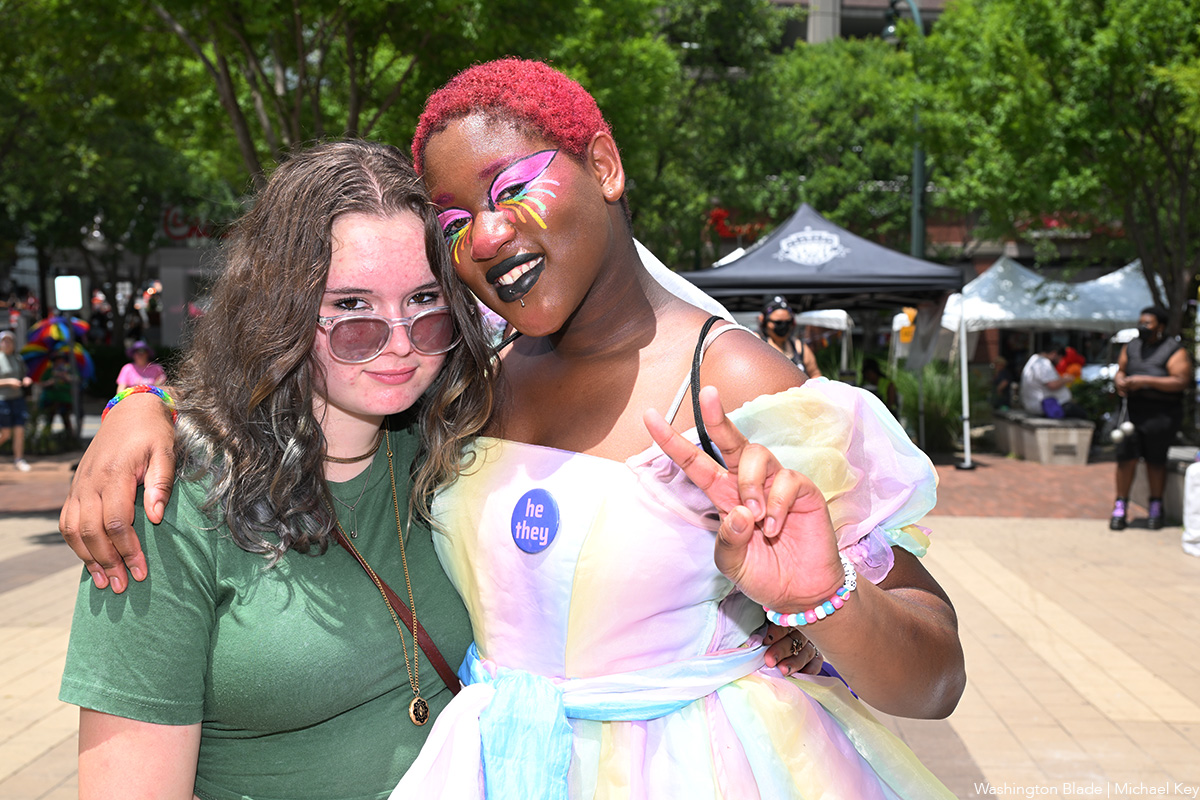
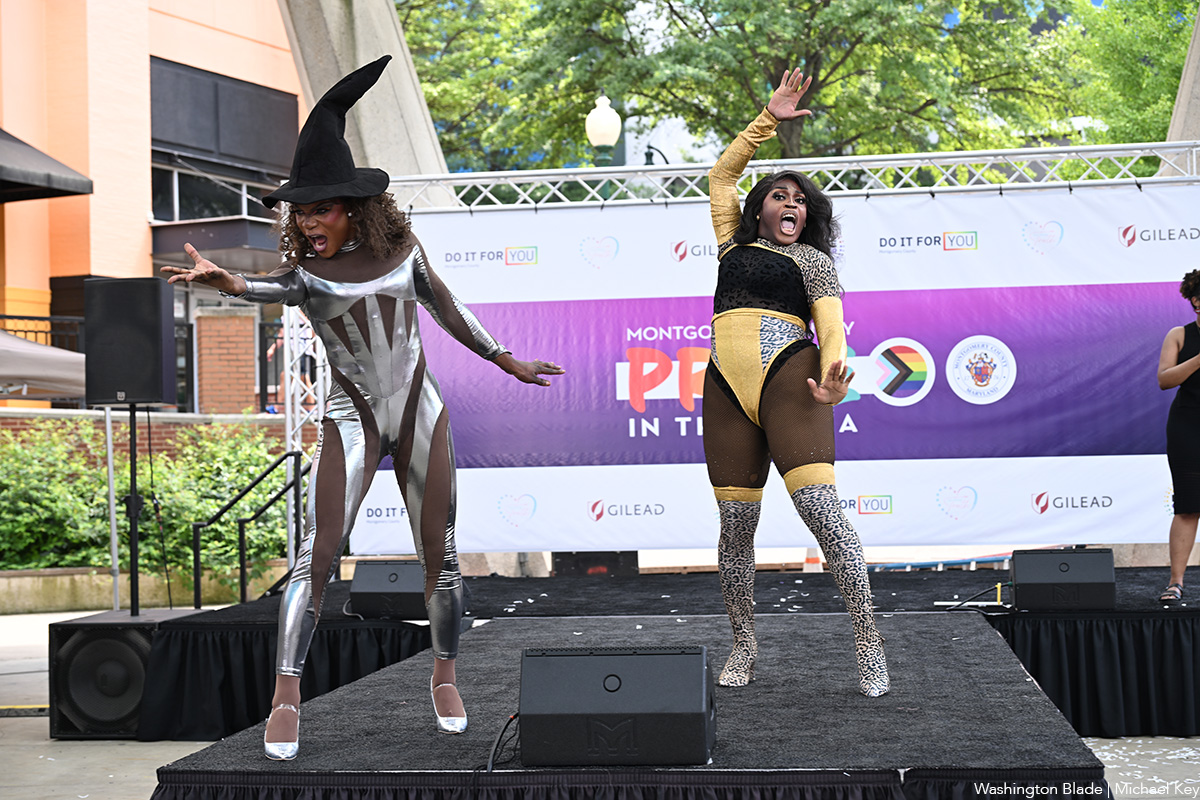
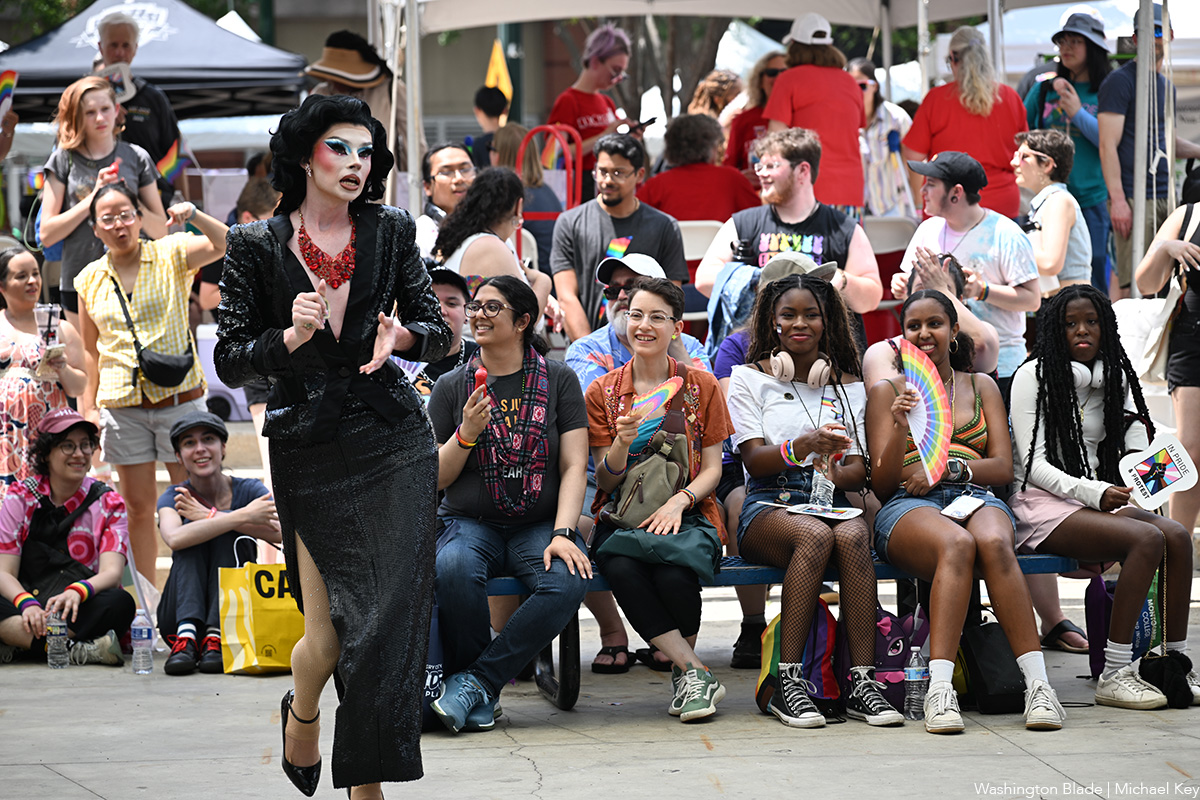
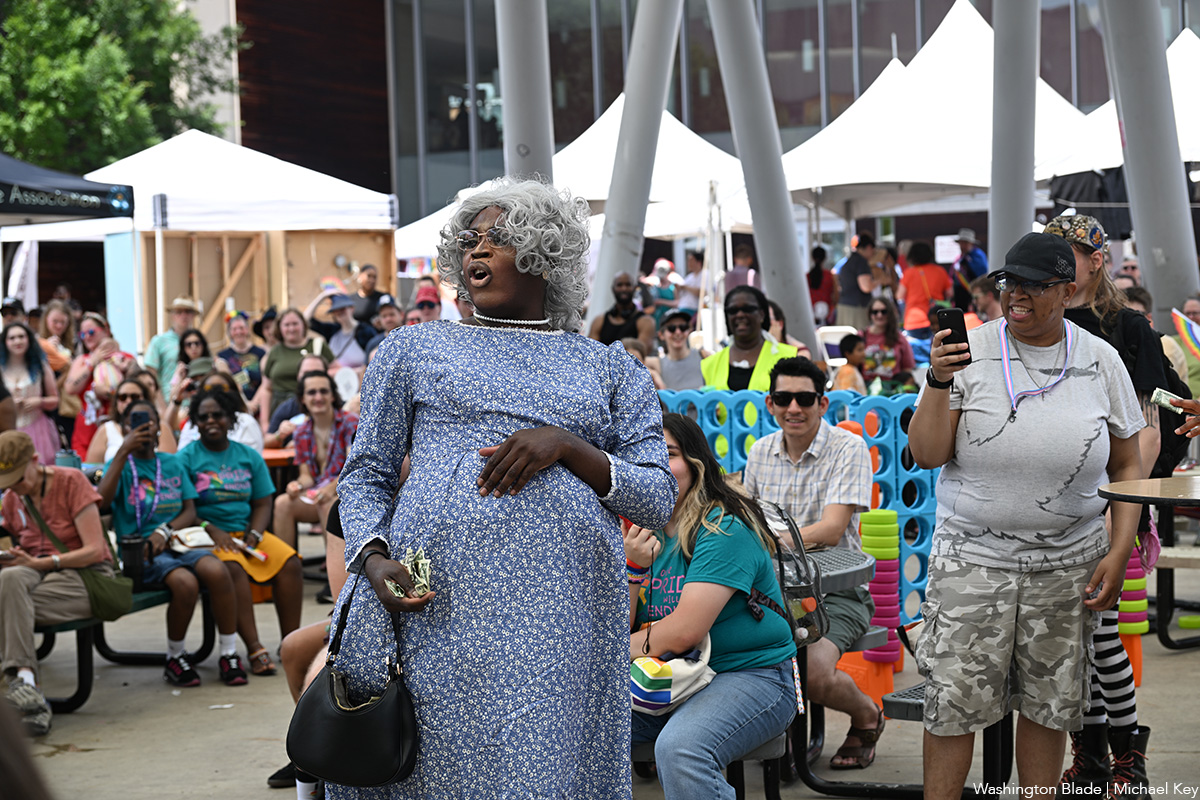
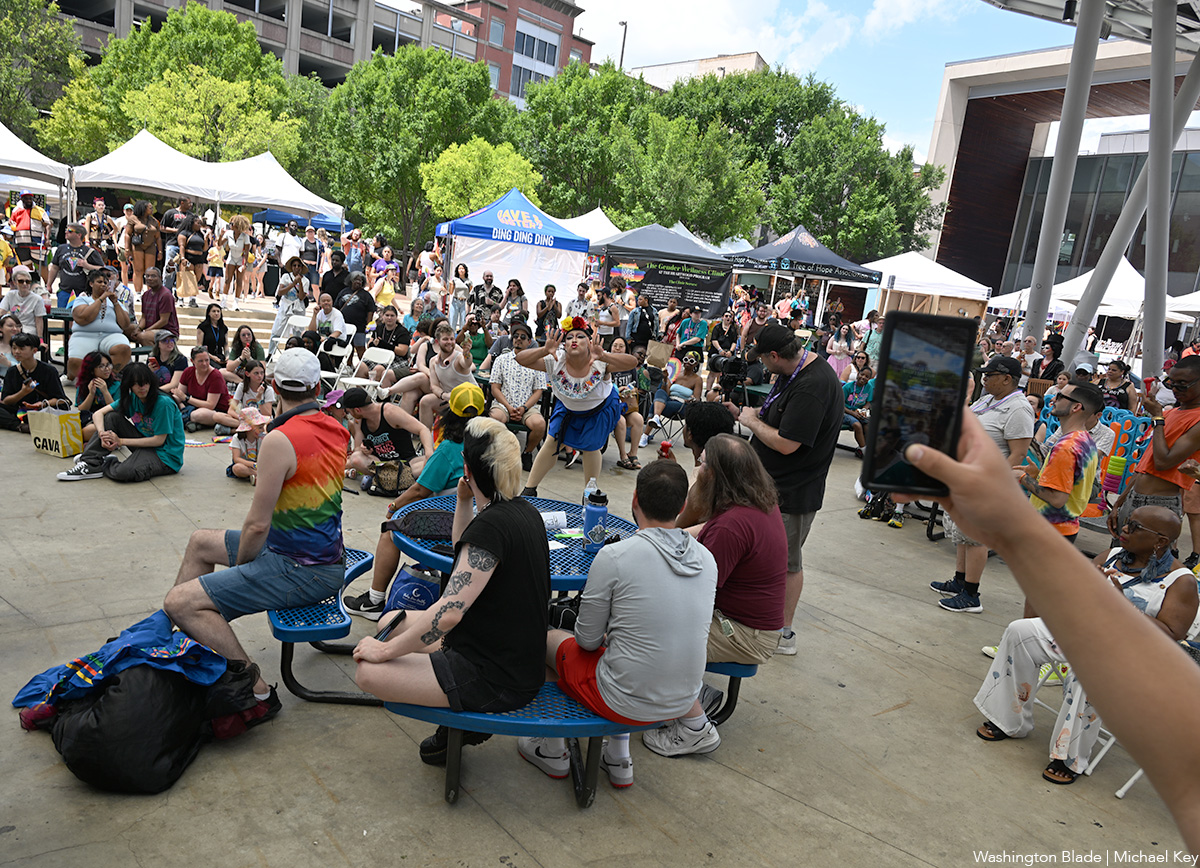
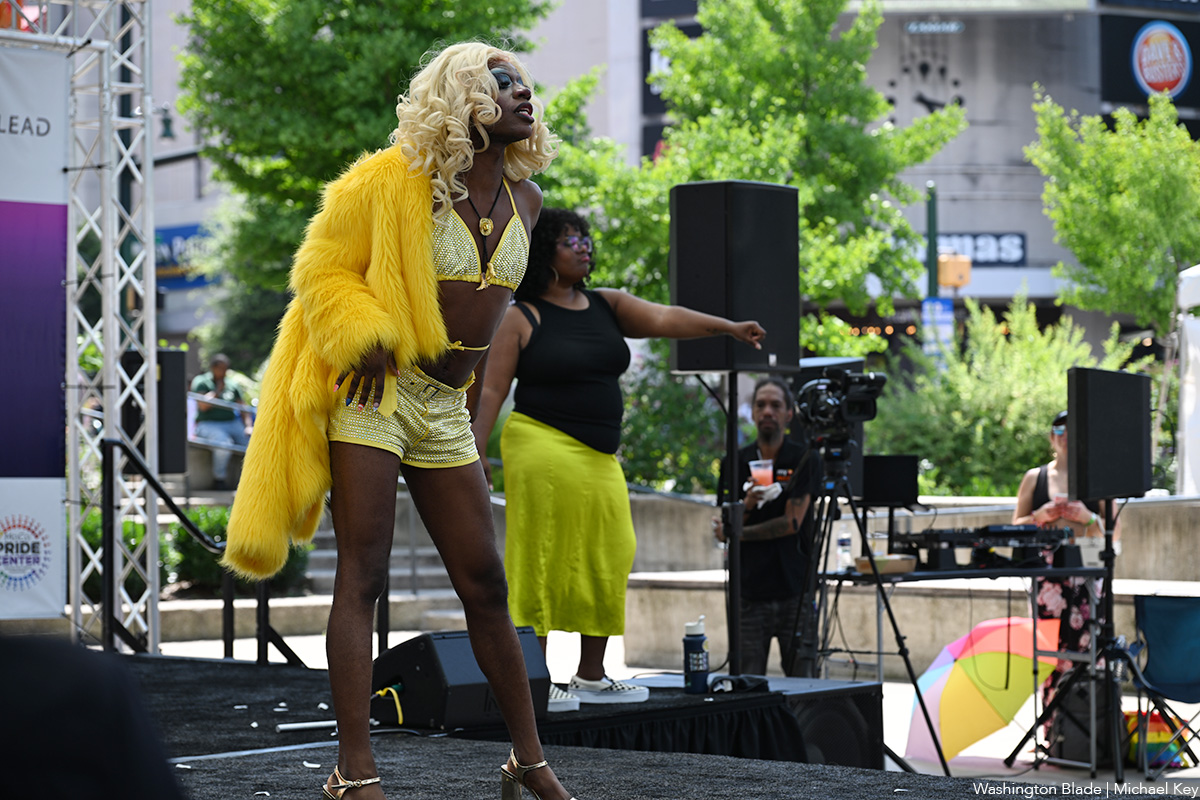
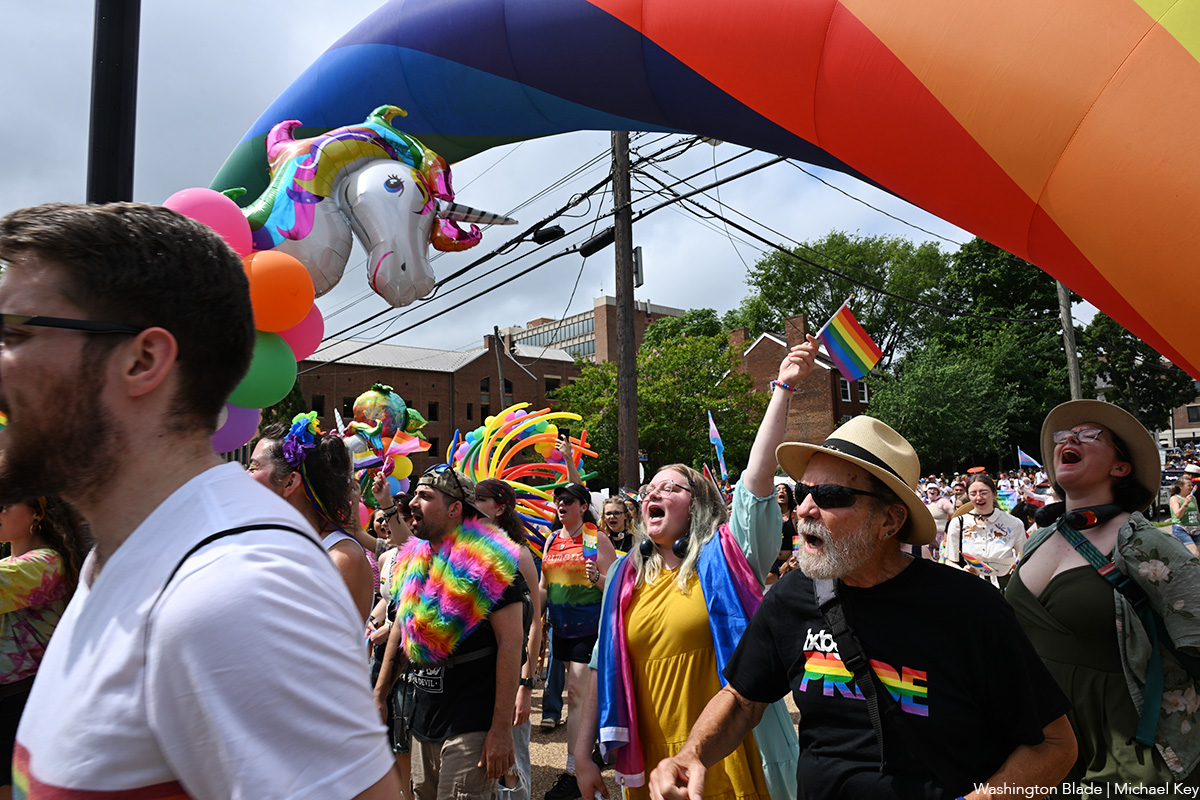
The fifth annual Fredericksburg Pride march and festival was held on Saturday, June 28. A march through the streets of downtown Fredericksburg, Va. was followed by a festival at Riverfront Park.
(Washington Blade photos by Michael Key)
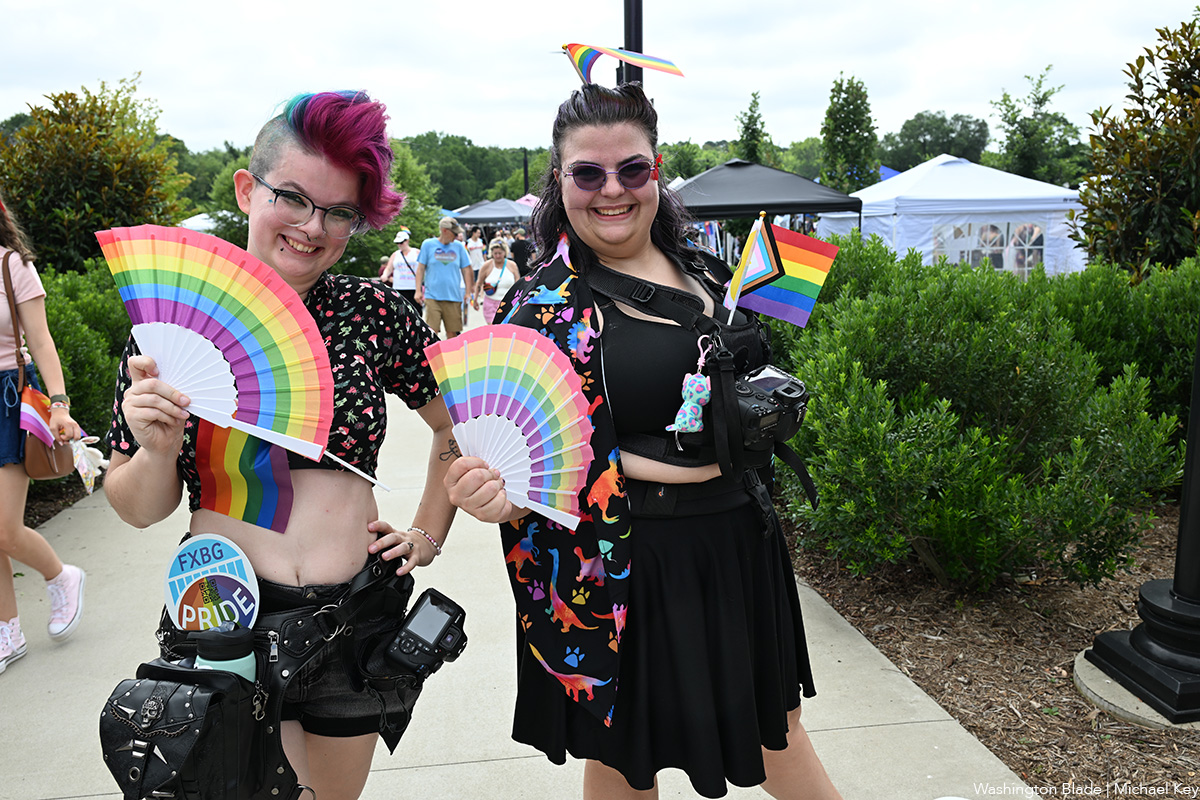
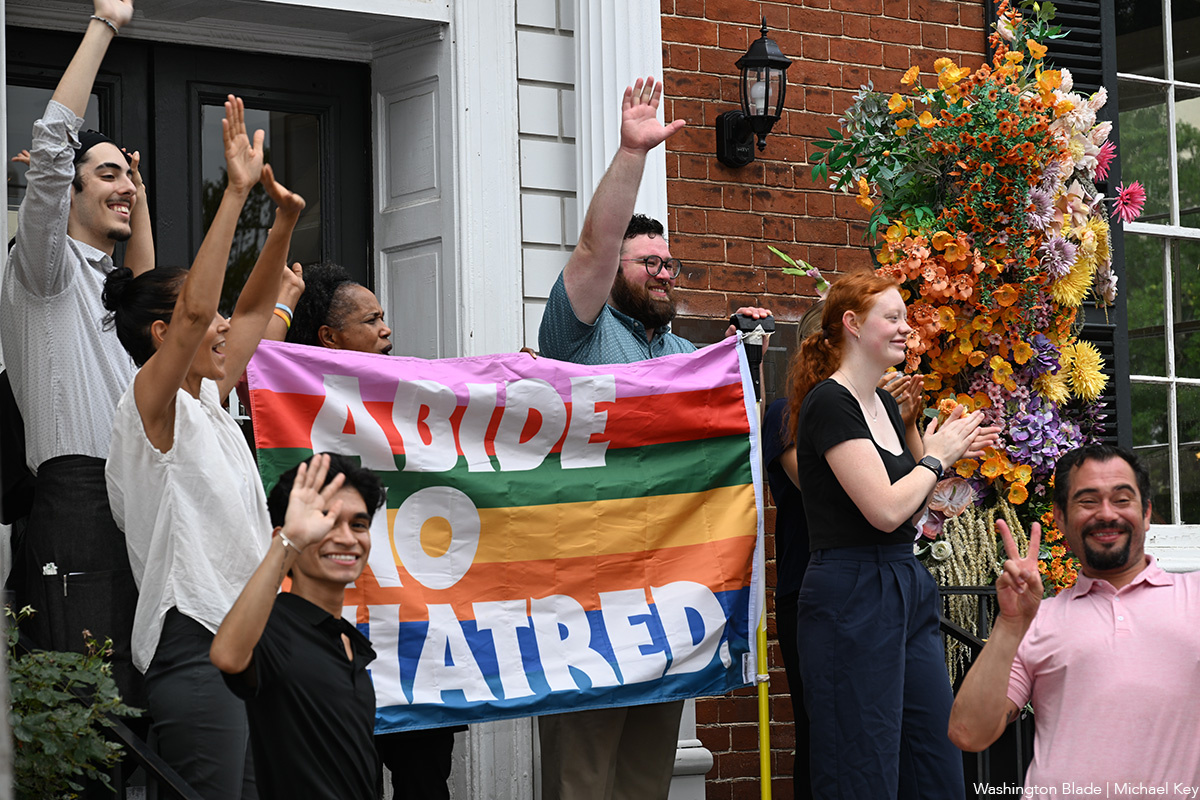
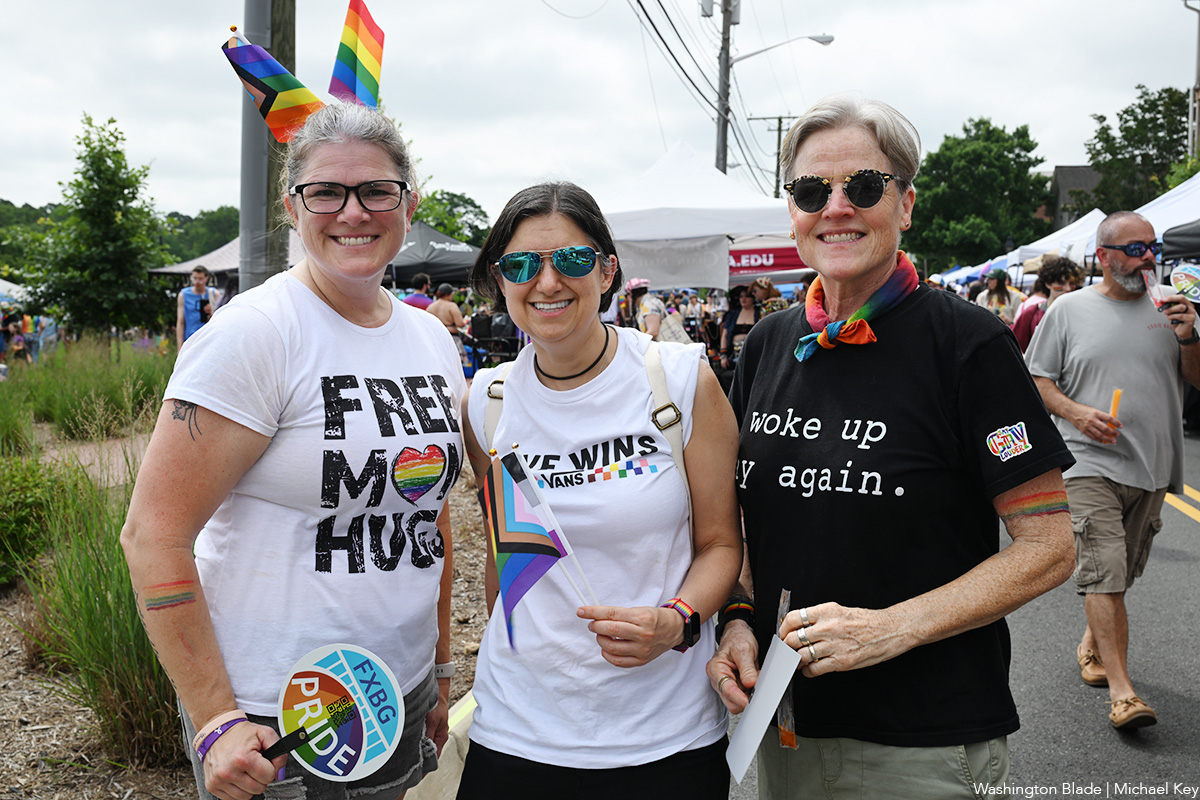
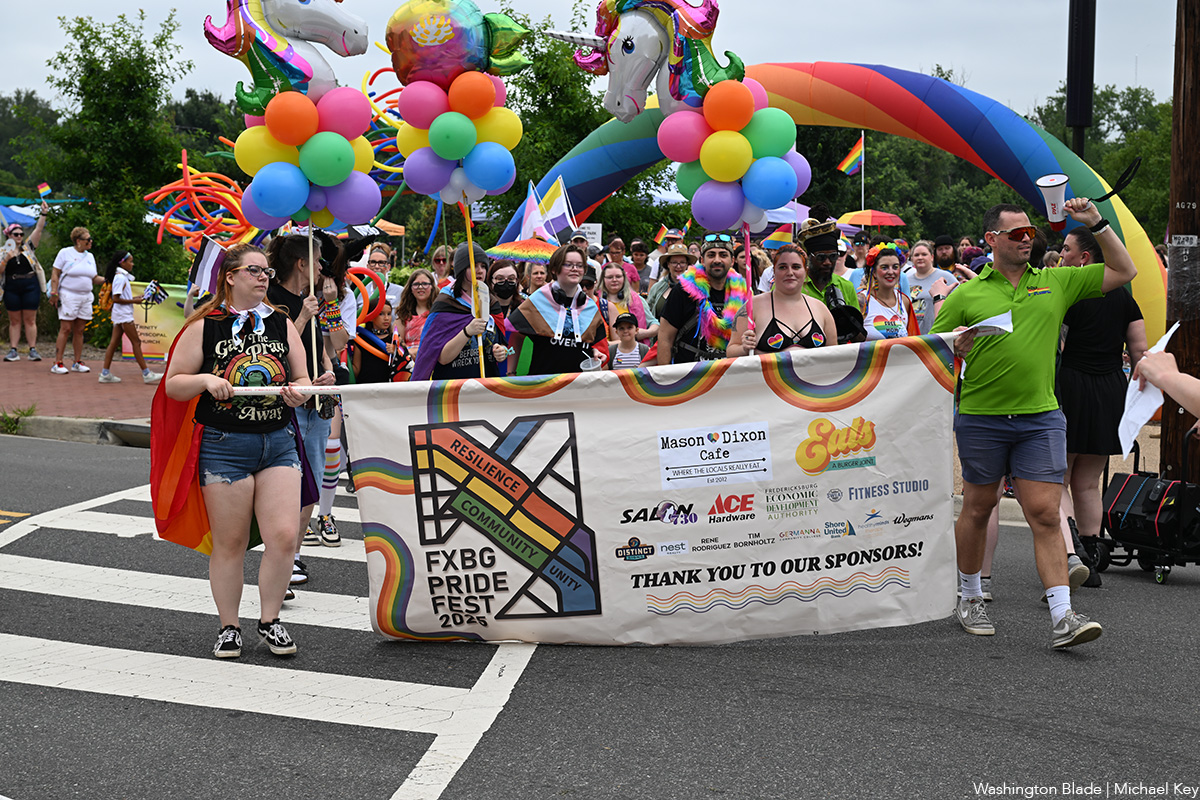
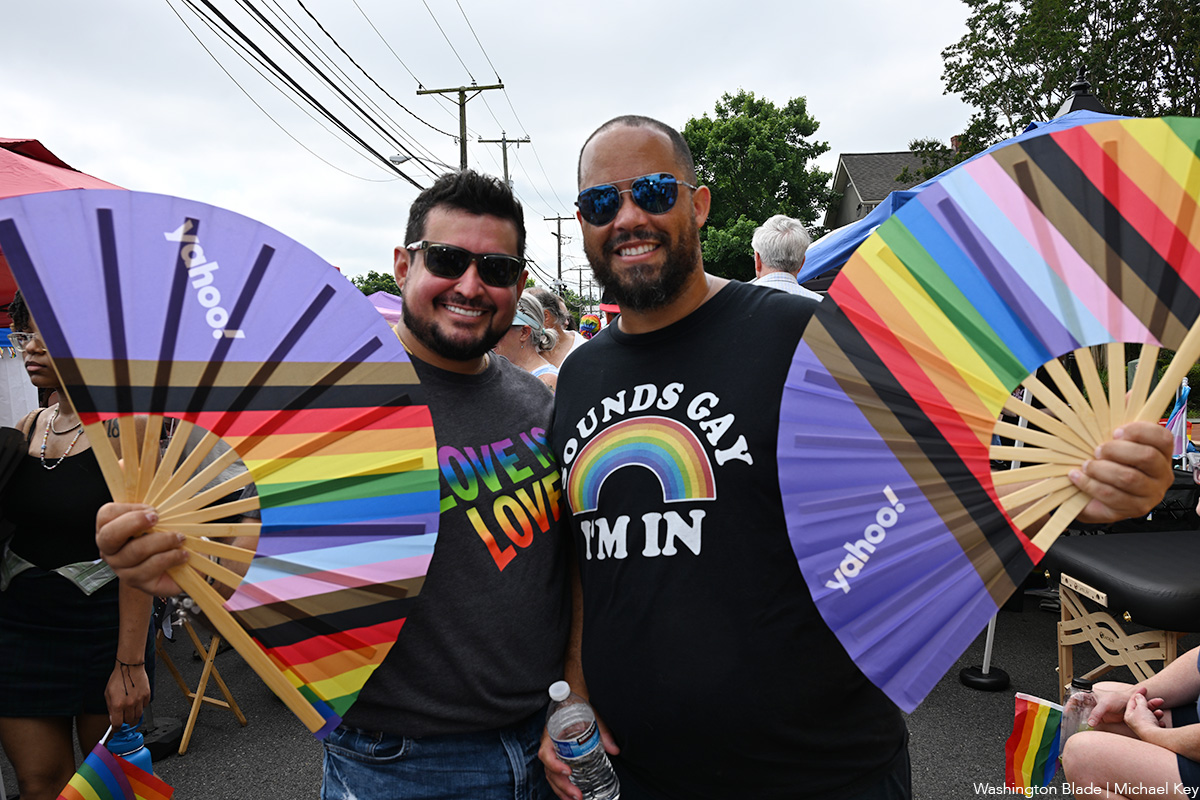
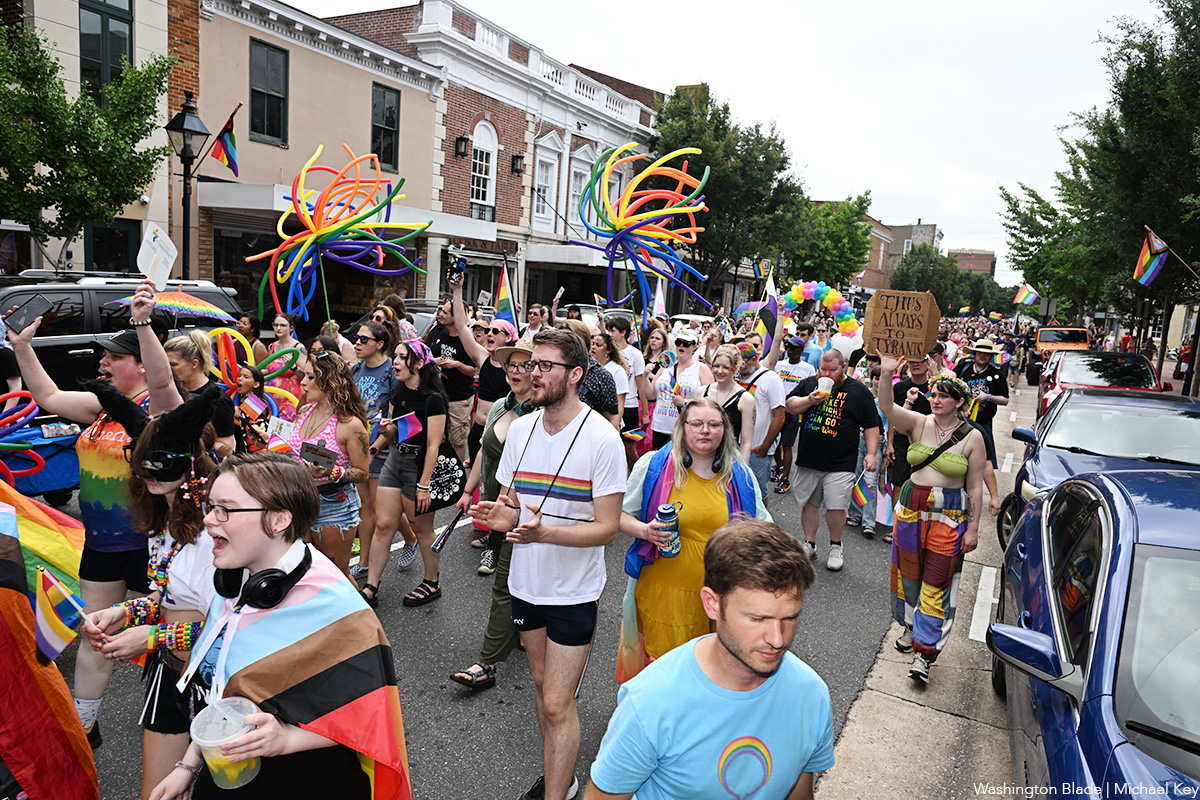
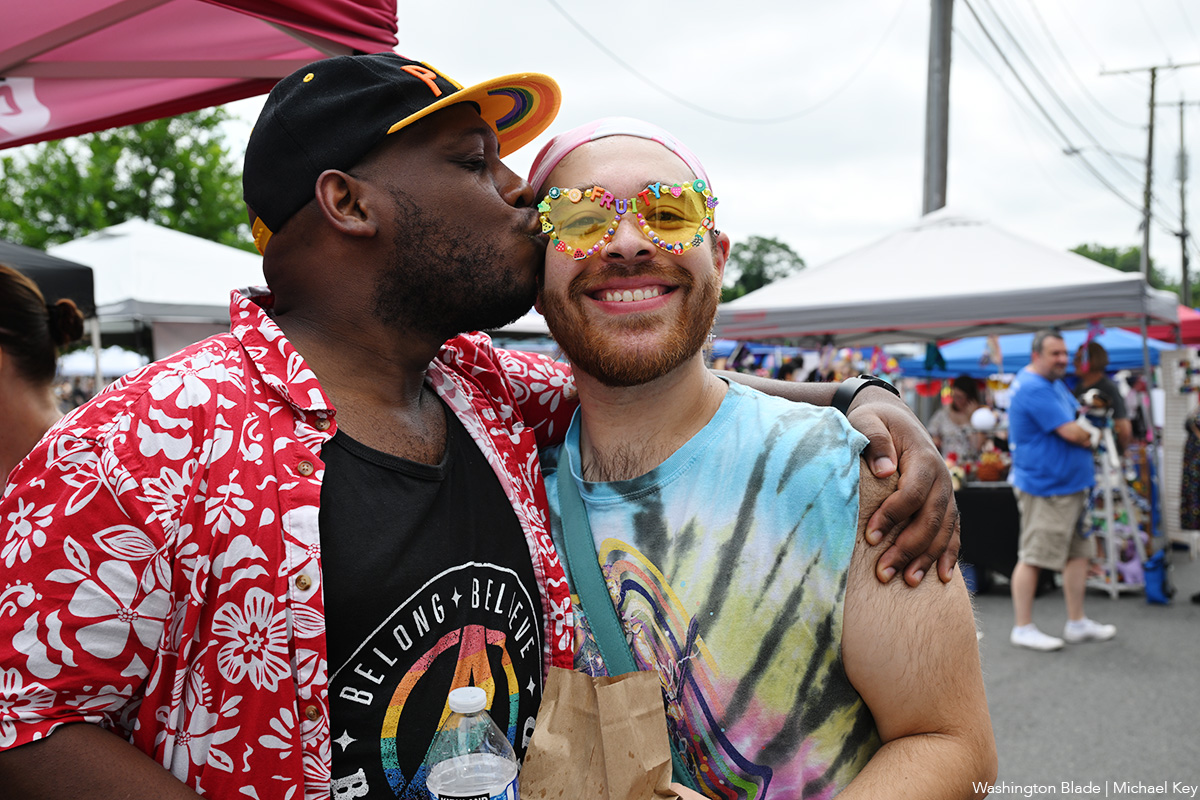
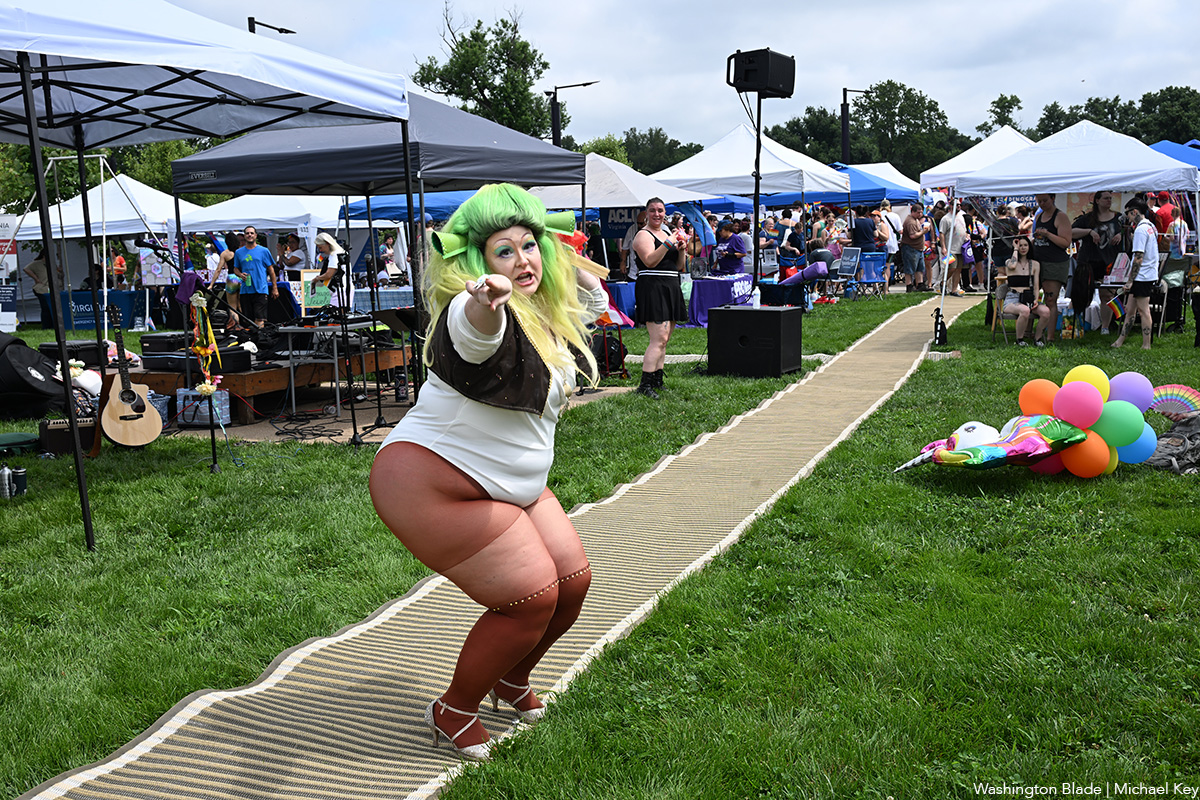
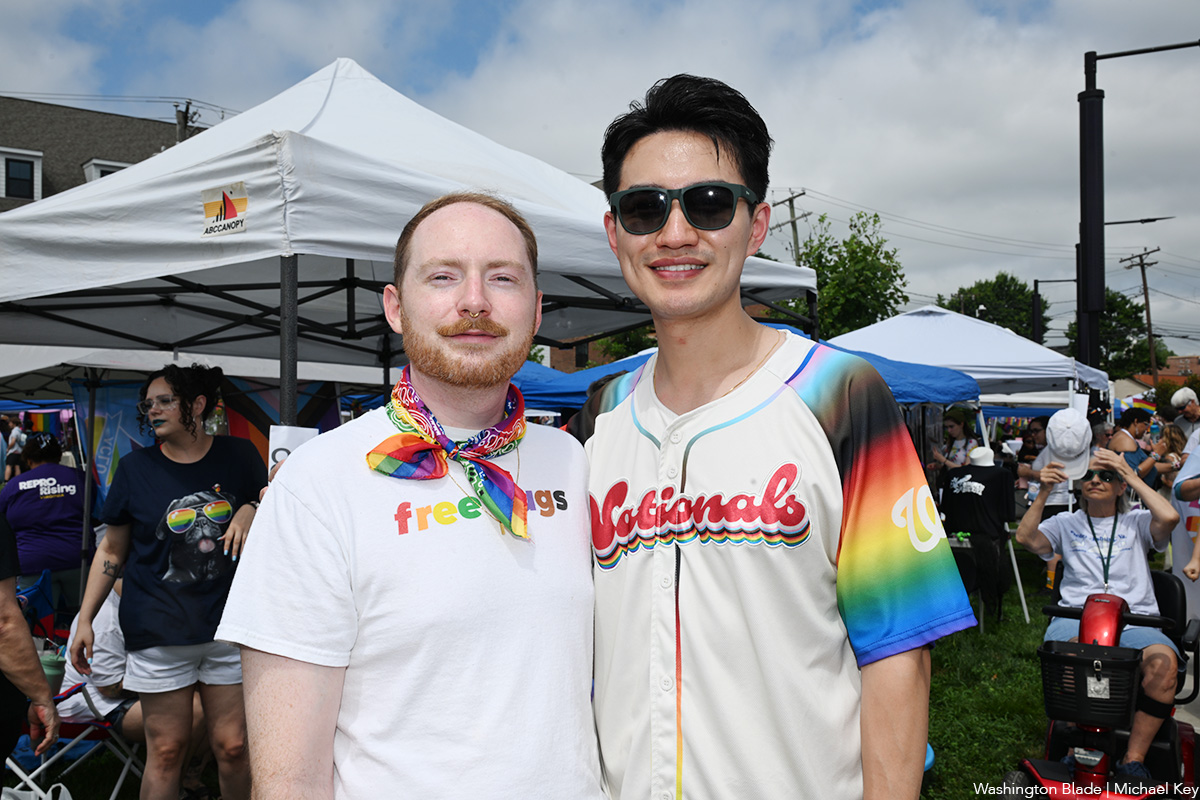

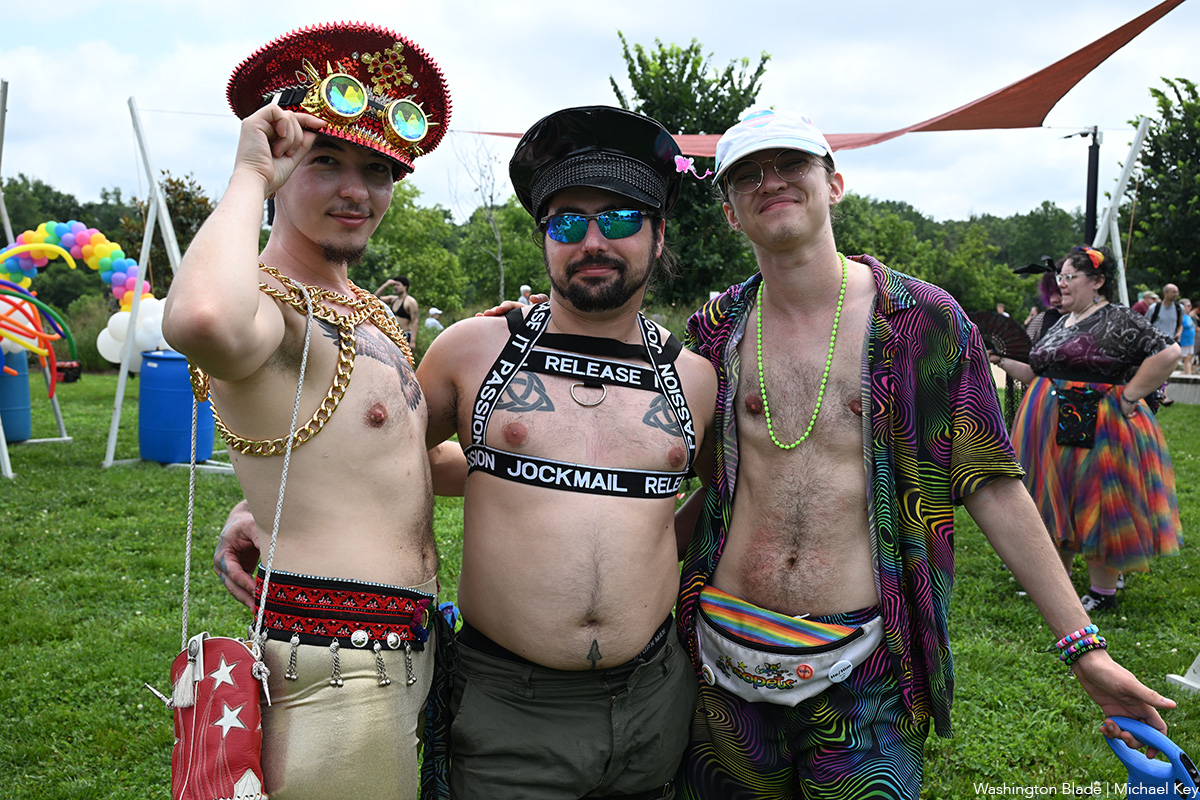

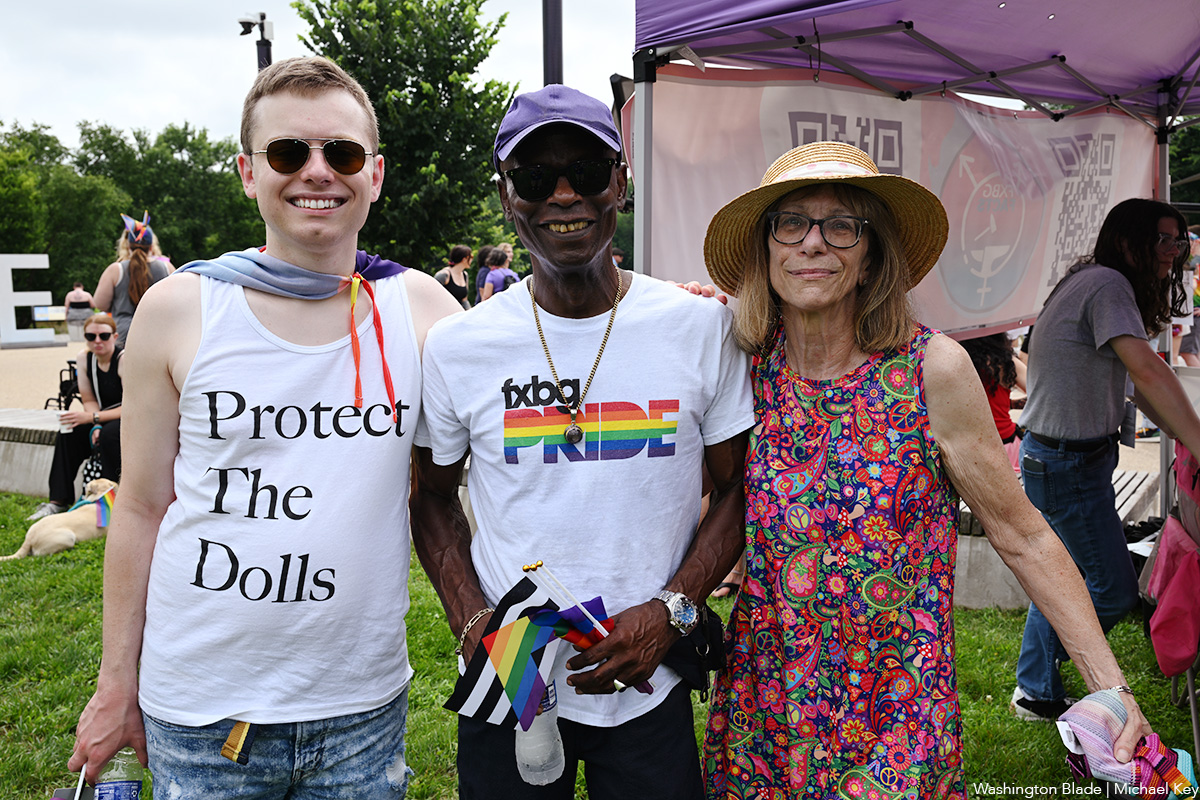

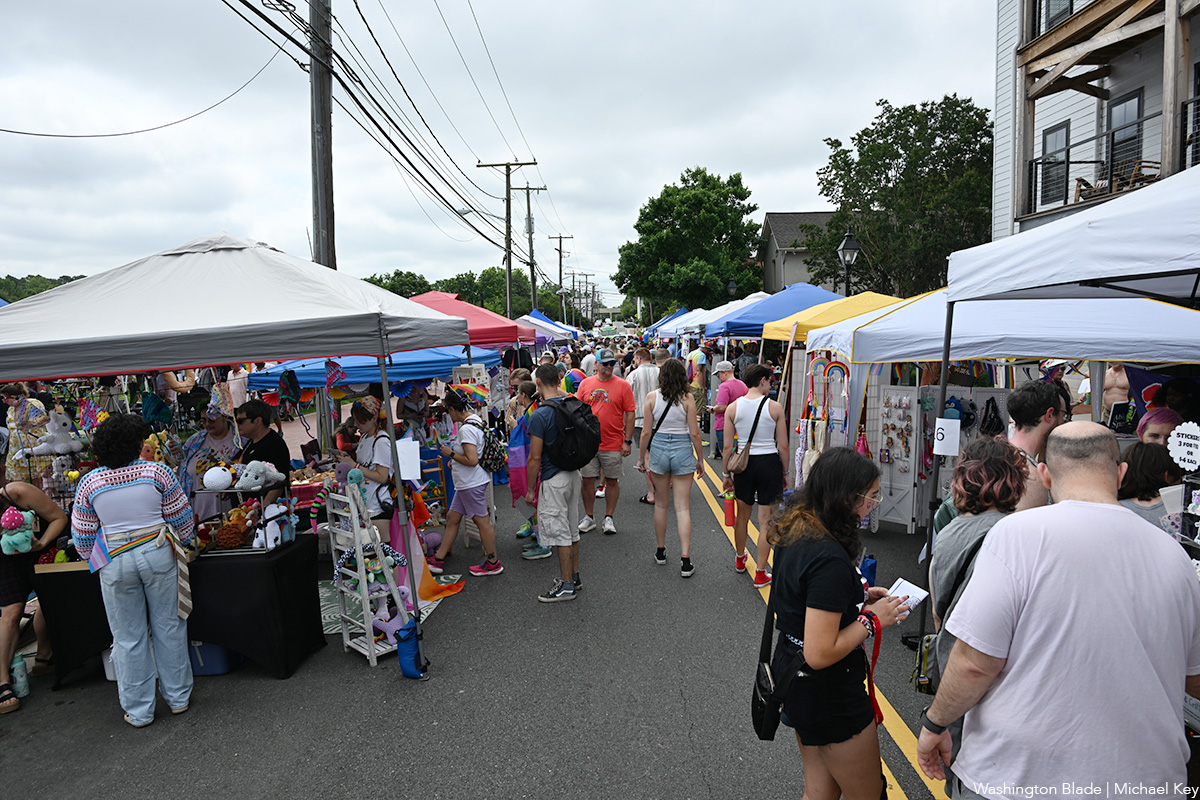
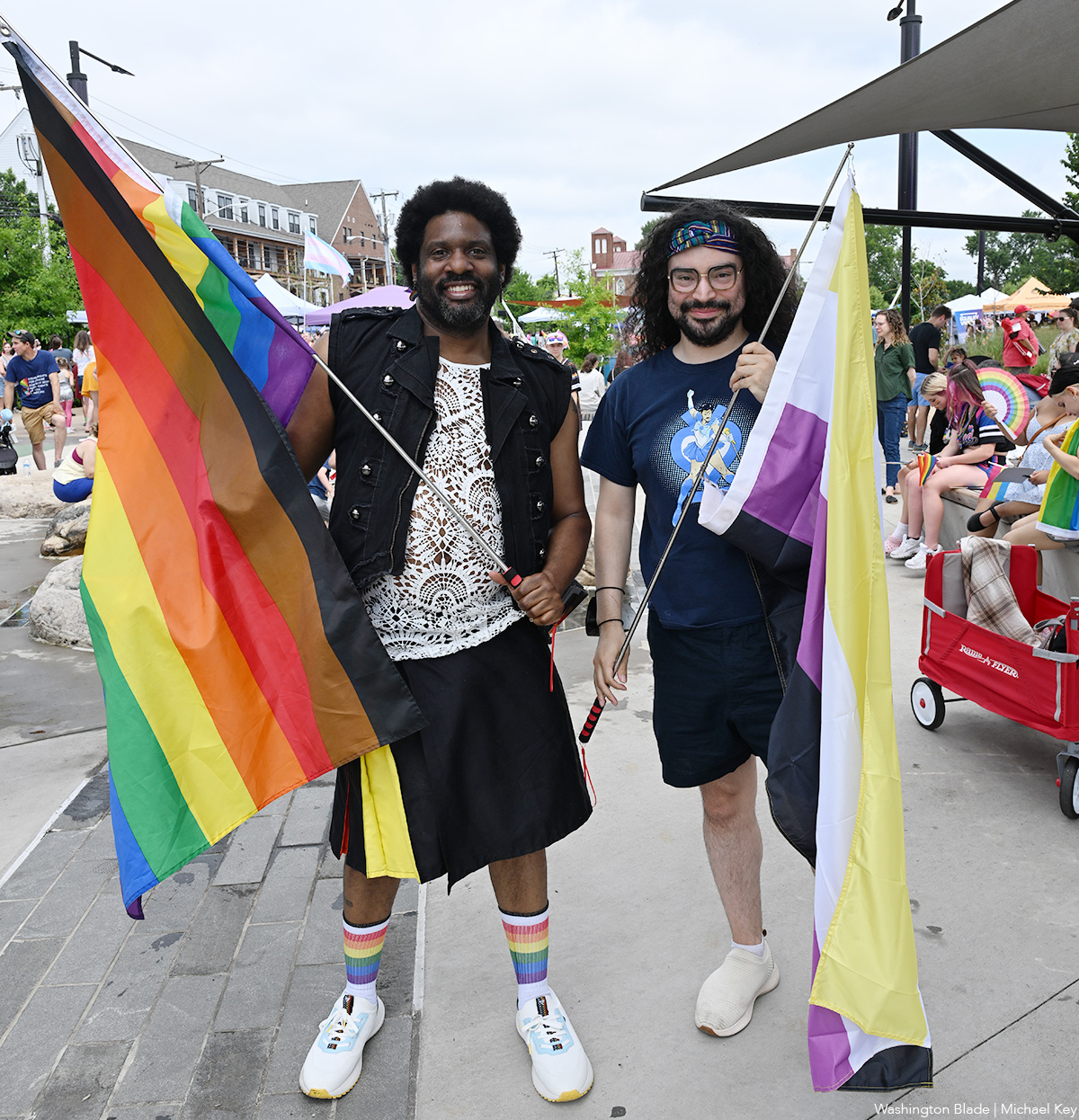
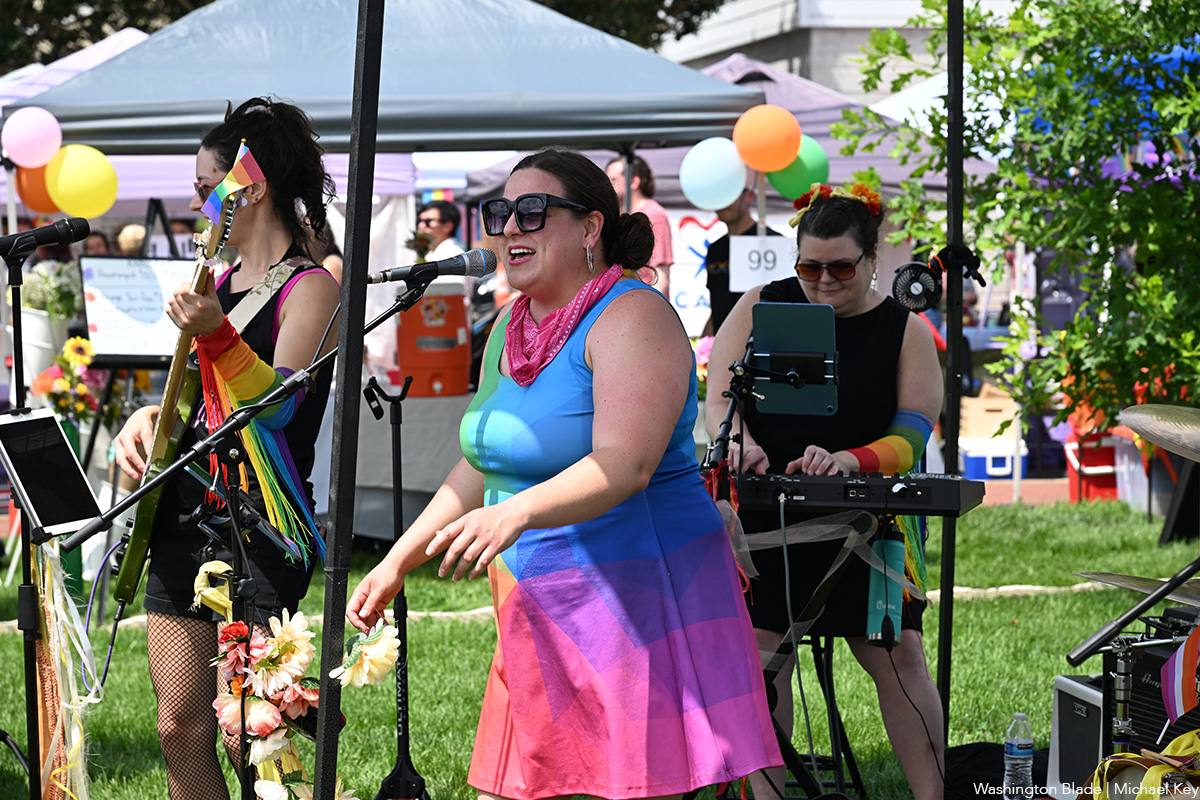
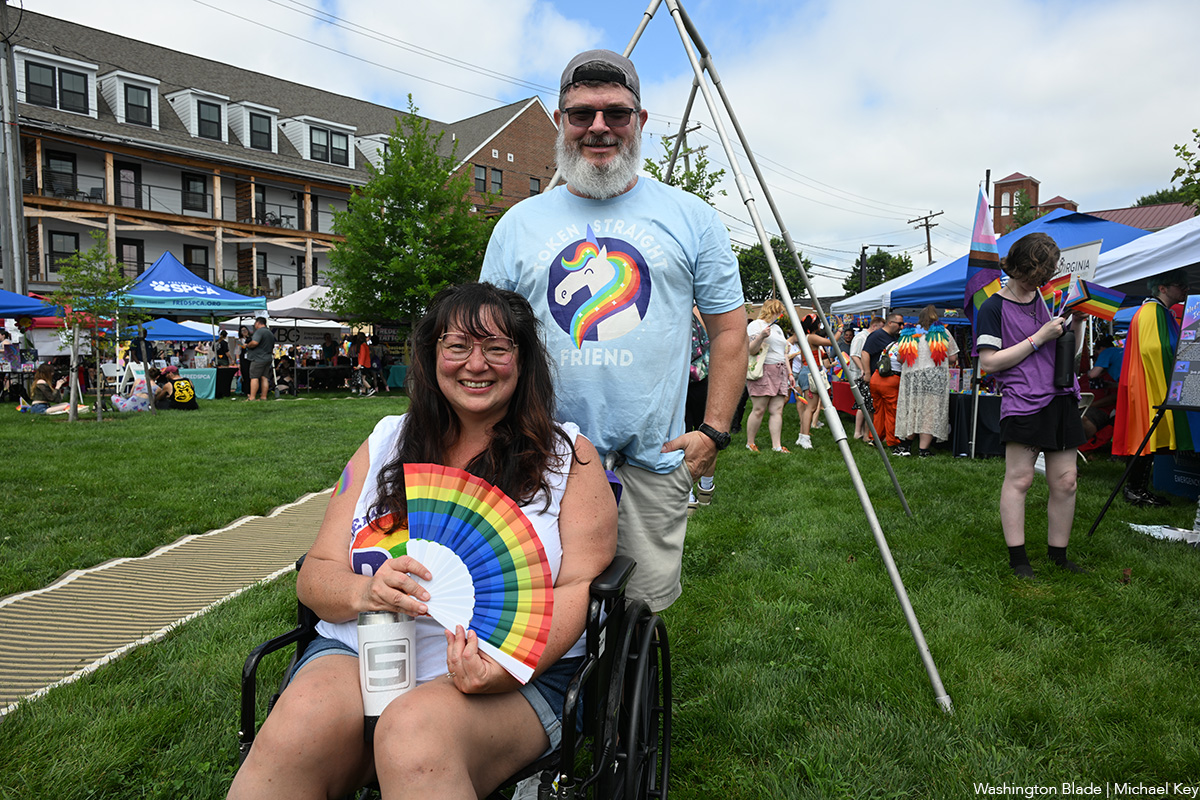
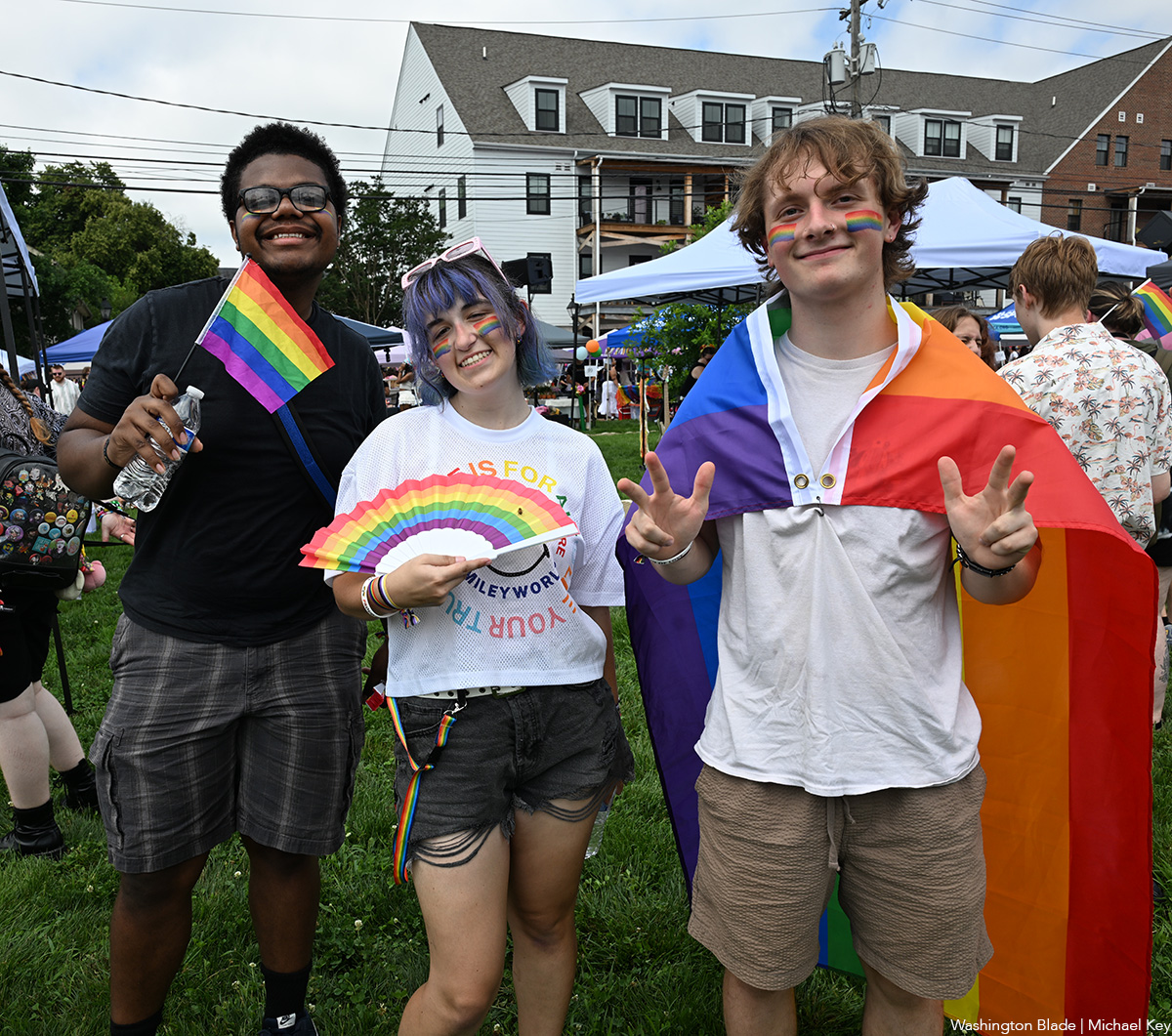
India
Anaya Bangar challenges ban on trans women in female cricket teams
Former Indian cricketer Sanjay Bangar’s daughter has received support
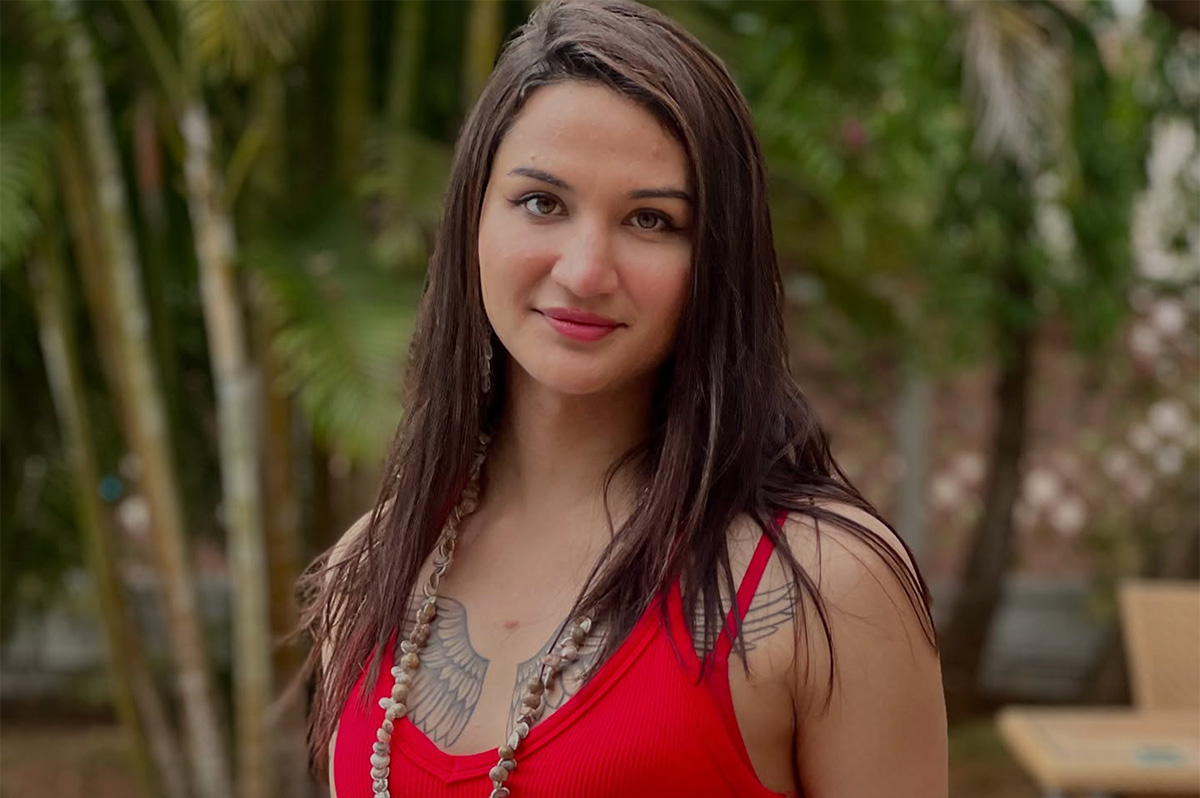
Anaya Bangar, the daughter of former Indian cricketer Sanjay Bangar, has partnered with the Manchester Metropolitan University Institute of Sport in the U.K. to assess her physiological profile following her gender-affirming surgery and undergoing hormone replacement therapy.
From January to March 2025, the 23-year-old underwent an eight-week research project that measured her glucose levels, oxygen uptake, muscle mass, strength, and endurance after extensive training.
The results, shared via Instagram, revealed her metrics align with those of cisgender female athletes, positioning her as eligible for women’s cricket under current scientific standards. Bangar’s findings challenge the International Cricket Council’s 2023 ban on transgender athletes in women’s cricket, prompting her to call for a science-based dialogue with the Board of Control for Cricket in India and the ICC to reform policies for transgender inclusion.
“I am talking with scientific evidence in my hand,” Bangar said in an interview posted to her Instagram page. “So, I hope, this makes an impact and I will be hoping to BCCI and ICC talking with me and discussing this further.”
On Nov. 21, 2023, the ICC enacted a controversial policy barring trans women from international women’s cricket. Finalized after a board meeting in Ahmedabad, India, the regulation prohibits any trans player who has experienced male puberty from competing, irrespective of gender-affirming surgery or hormone therapy. Developed through a 9-month consultation led by the ICC’s Medical Advisory Committee, the rule aims to safeguard the “integrity, safety, and fairness” of women’s cricket but has drawn criticism for excluding athletes like Canada’s Danielle McGahey, the first trans woman to play internationally. The policy, which allows domestic boards to set their own rules, is slated for review by November 2025.
Bangar shared a document on social media verifying her participation in a physiological study at the Manchester Metropolitan University Institute of Sport, conducted from Jan. 20 to March 3, 2025, focused on cricket performance. The report confirmed that her vital metrics — including haemoglobin, blood glucose, peak power, and mean power — aligned with those of cisgender female athletes. Initially, her fasting blood glucose measured 6.1 mmol/L, slightly above the typical non-diabetic range of 4.0–5.9 mmol/L, but subsequent tests showed it normalized, reinforcing the study’s findings that her physical profile meets female athletic standards.
“I am submitting this to the BCCI and ICC, with full transparency and hope,” said Bangar. “My only intention is to start a conversation based on facts not fear. To build space, not divide it.”
In a letter to the BCCI and the ICC, Bangar emphasized her test results from the Manchester Metropolitan University study. She explained that the research aimed to assess how hormone therapy had influenced her strength, stamina, haemoglobin, glucose levels, and overall performance, benchmarked directly against cisgender female athletic standards.
Bangar’s letter to the BCCI and the ICC clarified the Manchester study was not intended as a political statement but as a catalyst for a science-driven dialogue on fairness and inclusion in cricket. She emphasized the importance of prioritizing empirical data over assumptions to shape equitable policies for trans athletes in the sport.
Bangar urged the BCCI, the world’s most influential cricket authority, to initiate a formal dialogue on trans women’s inclusion in women’s cricket, rooted in medical science, performance metrics, and ethical fairness. She called for the exploration of eligibility pathways based on sport-specific criteria, such as haemoglobin thresholds, testosterone suppression timelines, and standardized performance testing. Additionally, she advocated for collaboration with experts, athletes, and legal advisors to develop policies that balance inclusivity with competitive integrity.
“I am releasing my report and story publicly not for sympathy, but for truth. Because inclusion does not mean ignoring fairness, it means measuring it, transparently and responsibly,” said Bangar in a letter to the BCCI. “I would deeply appreciate the opportunity to meet with you or a representative of the BCCI or ICC to present my findings, discuss possible policy pathways, and work towards a future where every athlete is evaluated based on real data, not outdated perceptions.”
Before her transition, Bangar competed for Islam Gymkhana in Mumbai and Hinckley Cricket Club in the U.K., showcasing her talent in domestic cricket circuits. Her father, Sanjay Bangar, was a dependable all-rounder for the Indian national cricket team from 2001 to 2004, playing 12 test matches and 15 One Day Internationals. He later served as a batting coach for the Indian team from 2014 to 2019, contributing to its strategic development.
Cricket in India is a cultural phenomenon, commanding a fanbase of more than 1 billion, with more than 80 percent of global cricket viewership originating from the country.
The International Cricket Council, the sport’s governing body, oversees 12 full member nations and more than 90 associate members, with the U.S. recently gaining associate member status in 2019 and co-hosting the 2024 ICC Men’s T20 World Cup. The BCCI generated approximately $2.25 billion in revenue in the 2023–24 financial year, primarily from the Indian Premier League, bilateral series, and ICC revenue sharing. The ICC earns over $3 billion from media rights in India alone for the 2024–27 cycle, contributing nearly 90 percent of its global media rights revenue, with the BCCI receiving 38.5 percent of the ICC’s annual earnings, approximately $231 million per year.
Women’s cricket in India enjoys a growing fanbase, with over 300 million viewers for the Women’s Premier League in 2024, making it a significant driver of the sport’s global popularity. The International Cricket Council oversees women’s cricket in 12 full member nations and over 90 associate members, with the U.S. fielding a women’s team since gaining associate status in 2019 and competing in ICC events like the 2024 Women’s T20 World Cup qualifiers. The BCCI invests heavily in women’s cricket, allocating approximately $60 million annually to the WPL and domestic programs in 2024–25, while contributing to the ICC’s $20 million budget for women’s cricket development globally. India’s media market for women’s cricket, including WPL broadcasting rights, generated $120 million in 2024, accounting for over 50 percent of the ICC’s women’s cricket media revenue.
“As a woman, I feel when someone says that they are women, then they are, be trans or cis. A trans woman is definitely the same as a cis woman emotionally and in vitals, and specially, when someone is on hormone replacement therapy. Stopping Anaya Bangar from playing is discrimination and violation of her rights. It is really sad and painful that every transwoman need to fight and prove their identity everywhere,” said Indrani Chakraborty, an LGBTQ rights activist and a mother of a trans woman. “If ICC and BCCI is stopping her from playing for being transgender, then I will say this to be their lack of awareness and of course the social mindsets which deny acceptance.”
Chakraborty told the Blade that Bangar is an asset, no matter what. She said that the women’s cricket team will only benefit by participation, but the discriminating policies are the hindrance.
“Actually the transgender community face such discrimination in every sphere. In spite of being potent, they face rejection. This is highly inhuman. These attitudes is regressive and will never let to prosper. Are we really in 2025?,” said Chakraborty. “We, our mindset and the society are the issues. We, as a whole, need to get aware and have to come together for getting justice for Anaya. If today, we remain silent, the entire community will be oppressed. Proper knowledge of gender issues need to be understood.”
The BCCI and the International Cricket Council have not responded to the Blade’s repeated requests for comment.
-

 U.S. Supreme Court5 days ago
U.S. Supreme Court5 days agoSupreme Court upholds ACA rule that makes PrEP, other preventative care free
-

 U.S. Supreme Court5 days ago
U.S. Supreme Court5 days agoSupreme Court rules parents must have option to opt children out of LGBTQ-specific lessons
-

 Television5 days ago
Television5 days ago‘White Lotus,’ ‘Severance,’ ‘Andor’ lead Dorian TV Awards noms
-
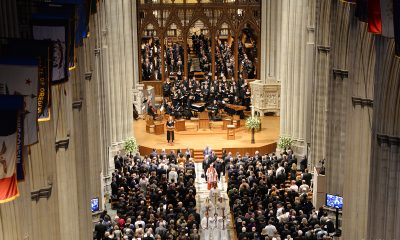
 Music & Concerts5 days ago
Music & Concerts5 days agoBerkshire Choral to commemorate Matthew Shepard’s life

